The Samsung S90F in the 65-inch version is a television that demonstrates the significant quality leap that can come from using a QD-OLED panel in a mid-range model. Compared to other variants, the S90F stands out as the best – it offers not only perfect blacks and infinite contrast like other versions with WOLED panels, but also noticeably higher brightness and a wider colour gamut. This translates to more impressive HDR, deeper colours, and smoother tonal transitions, making a strong impression in both cinematic productions and in gaming or sports. In everyday use, this television is incredibly versatile: it seamlessly takes on the role of an entertainment centre in the living room, a large monitor for PC gamers, or simply a screen for evening movie sessions. The Tizen system operates instantaneously, providing a wide selection of applications and integration with SmartThings, which will please those who enjoy having a smart home under control. Gamers receive a full set of modern solutions: four full HDMI 2.1 ports, VRR, ALLM, Game Bar with additional enhancements and, most importantly, remarkably low input lag. Moreover, the characteristic pixel response speed of OLEDs ensures that sports and games look absolutely stunning. The S90F also impresses in terms of design: slim bezels, aesthetic finishing and a panel that looks like a glass sheet do their job. The only significant limitation to keep in mind is the retention of blacks in difficult, heavily sunlit conditions. In such situations, it can slightly “heat up,” resembling a dark cherry colour rather than true black. However, in the evening, when most of us settle down for movies or series – the problem disappears entirely. It is then that the S90F showcases its full potential, delivering an image that can confidently be compared to televisions twice its price. That’s why the Samsung S90F in the 65-inch version can be called the most cost-effective OLED of 2025. It’s a model that combines outstanding picture quality, versatility, and an affordable price point in the upper mid-range segment. If you’re looking for a television that performs well in movies, gaming, sports, and everyday viewing, while not wanting to spend a fortune on top-tier models – it’s hard to find a better choice today.
- Matching (Score)
- Our verdict
- TV appearance
- Where to buy
- Contrast and black detail
- HDR effect quality
- Factory color reproduction
- Color reproduction after calibration
- Smoothness of tonal transitions
- Image scaling and smoothness of tonal transitions
- Blur and motion smoothness
- Console compatibility and gaming features
- Input lag
- Compatibility with PC
- Viewing angles
- Daytime performance
- Panel details
- TV features
- Apps
- Playing files from USB
- Sound
Samsung OLED S90F (QD-OLED) vs TCL C6KS / C69KS / Q6CS
Direct comparison
S90F / FAT / FAE
C6KS / C69KS / Q6CS
Available screen sizes: 65”
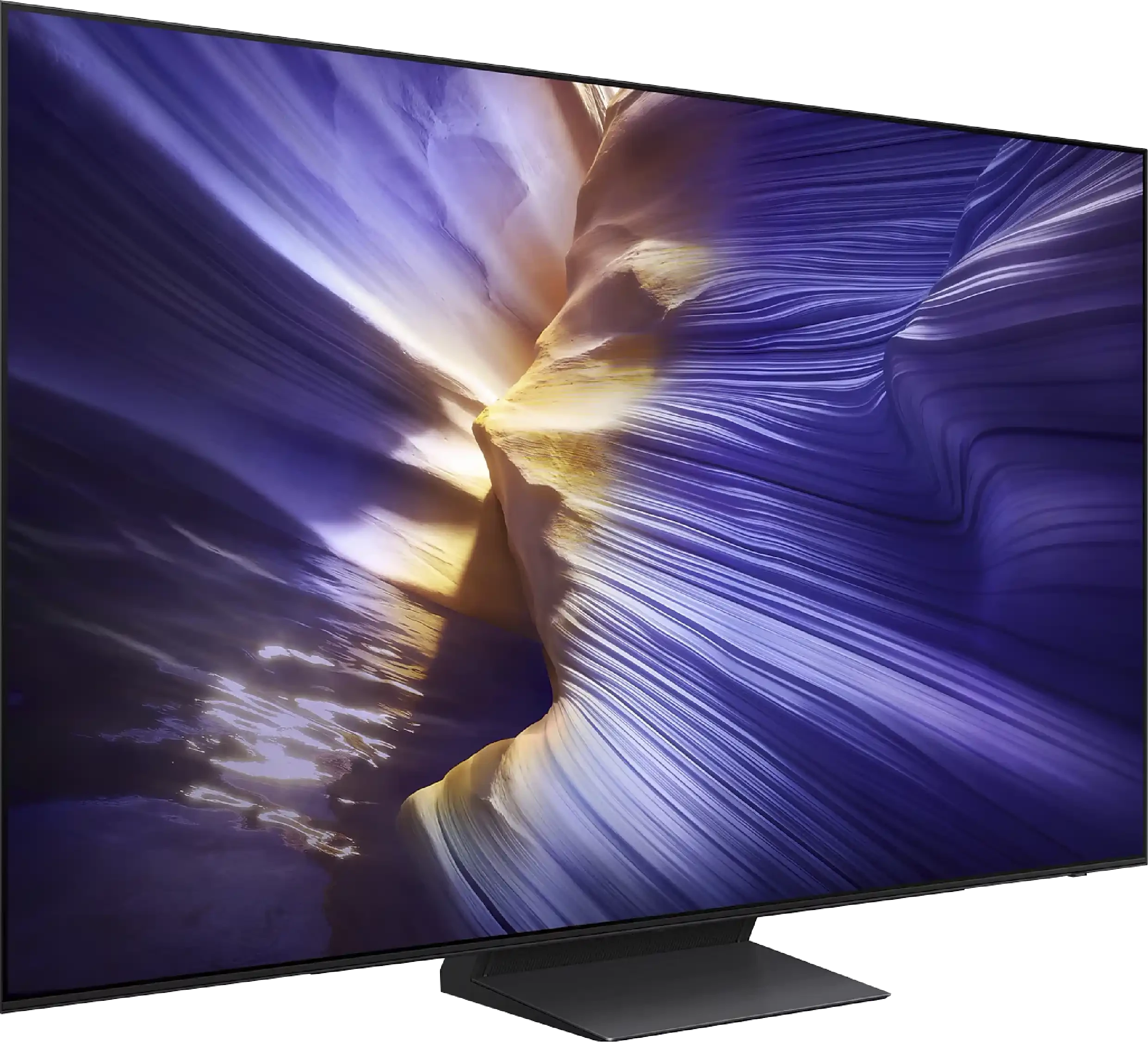

Panel type: QD-OLED
Resolution: 3840x2160
System: Tizen
Model year: 2025
Complete the survey to find out the result

Panel type: LCD VA
Resolution: 3840x2160
System: Google TV
Model year: 2025
Complete the survey to find out the result

Overall rating
8.4
6.4
Movies and series in UHD quality
9.0
5.9
Classic TV, YouTube
9.3
6.1
Sports broadcasts (TV and apps)
8.9
5.3
Gaming on console
9.8
7.7
TV as a computer monitor
8.6
1.7
Watching in bright light
5.7
6.6
Utility functions
7.7
7.0
Apps
8.7
9.6
Sound quality
7.4
6.5
Complete the survey to find out what fits your preferences
Advantages
QD-OLED panel with exceptional black levels and contrast
Very high brightness for an OLED in this segment (around 1700 nits)
Great HDR effect and wide colour gamut coverage thanks to the use of quantum dots
Perfect viewing angles – the picture looks great even from the side
Effectively reduces reflections in bright living rooms
Outstanding motion smoothness – OLED panel at 144Hz
Complete set for gamers: HDMI 2.1, ALLM, VRR, Game Bar, low input lag
Intuitive and fast Tizen system with a large app base
Good sound quality for a TV + support for Dolby Atmos
High build quality and slim design
Very good contrast and black level: VA panel and MINI-LED backlighting
Quite high (around 600 nits)
Many features for gamers: VRR, ALLM, HGiG
Additional gaming mode: 120Hz and 144Hz
Google TV system with a wide selection of applications
Support for multiple HDR formats including Dolby Vision
Support for Dolby Atmos and DTS
Quite pleasant sound from built-in speakers
Disadvantages
In very bright daylight, black can take on a navy tint (characteristic of QD-OLED panels)
No support for DTS:X (a problem for Blu-ray disc fans)
No USB recording functionality from built-in tuners
Why can't we find such a panel in all sizes?!
The panel has heavy blooming
Strong visible dithering (looks like artificial 4K)
Very poor compatibility with PC
Minor system errors
Lots of chaos in naming (many derivative models that are no different)
Our verdict
TCL C6KS (also known as C69KS and Q6CS) is a television that on paper promised to be a hit in the "value for money" category. And indeed, in many respects, it's a successful piece of equipment: thanks to the Mini-LED backlighting, we get good blacks and brightness that rivals more expensive models. In fact, it’s identical to that of the slightly pricier C6K, which we have already tested for you. Additionally, it features the same excellent Google TV system and surprisingly rich features for gamers, which make it enjoyable to play on, even with a 60 Hz panel. Unfortunately, the good impression is marred by the performance of the panel used. The television struggles with noticeable motion blur, and aggressive dithering (digital noise) makes the image often look unnatural and artificial – as if it has been unnaturally sharpened. Ultimately, the biggest problem with the C6KS is not its flaws but its sibling, the C6K. At its current price, this model is in a strange "in-between" position. It costs almost the same (or only slightly less) than the full-fledged TCL C6K, which offers a significantly better 120 Hz panel and is simply a complete construction without those annoying issues. The C6KS is a compromise model that will only become attractive under one condition – if its price drops drastically. For now, the much safer and better choice remains to pay the (often nominal) extra for the C6K model. One could jokingly assert that the letter "S" in the name actually stands for "Slim". However, it's not about an exceptionally slim body, but how much this model has been "slimmed down" in terms of features compared to the fully-fledged C6K.
TV appearance
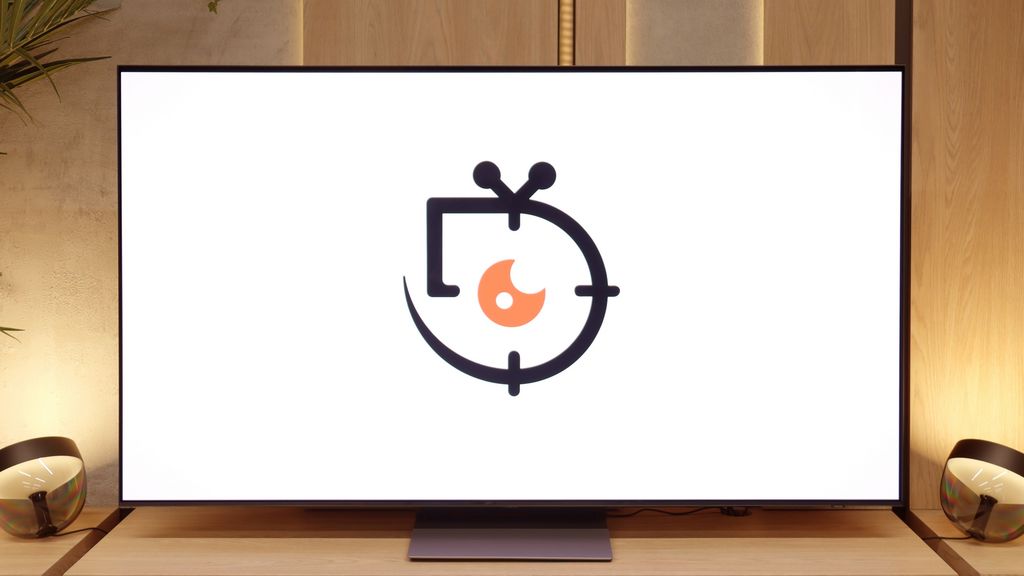
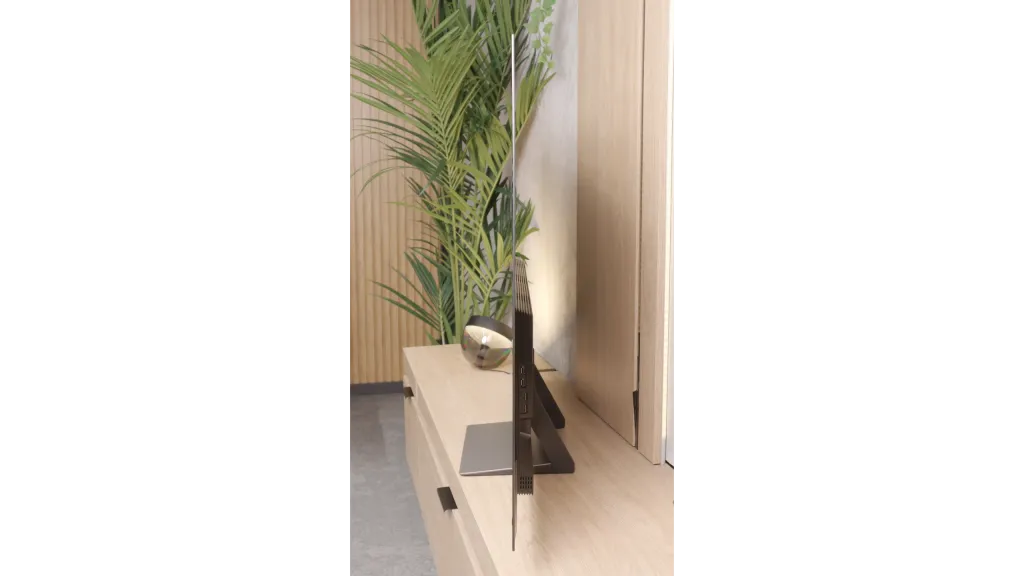
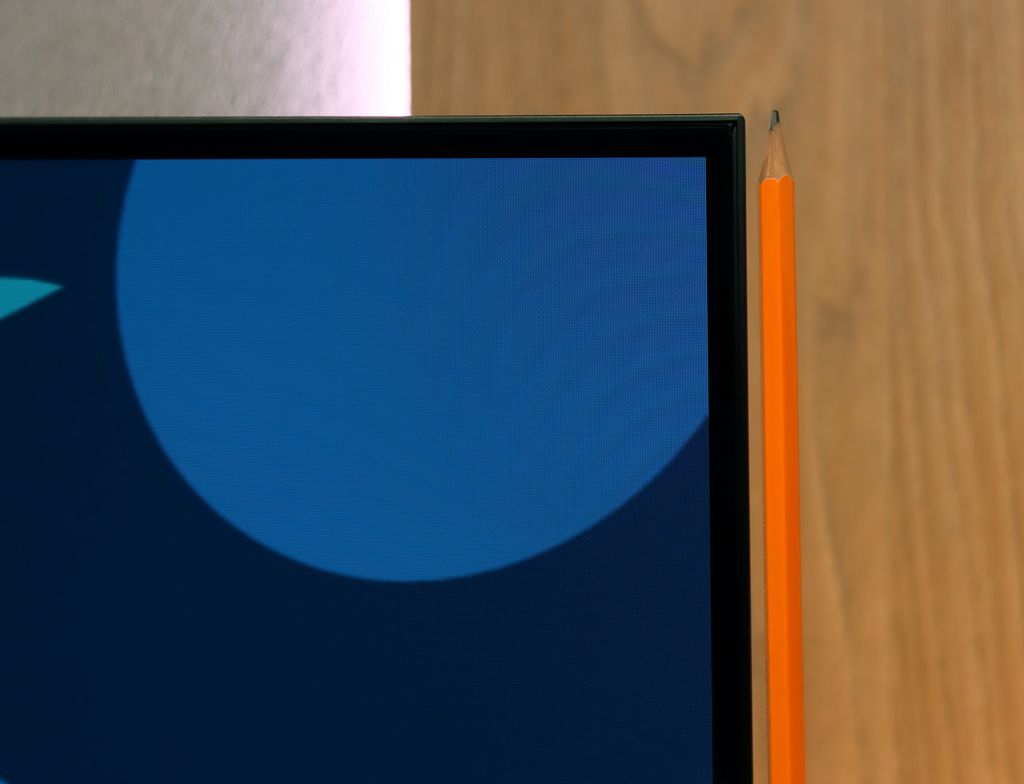
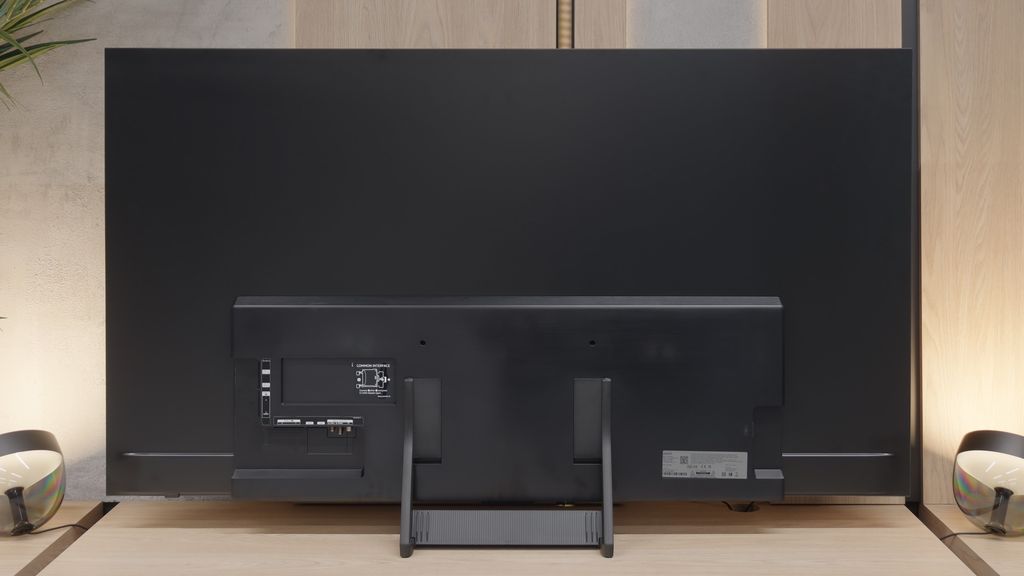
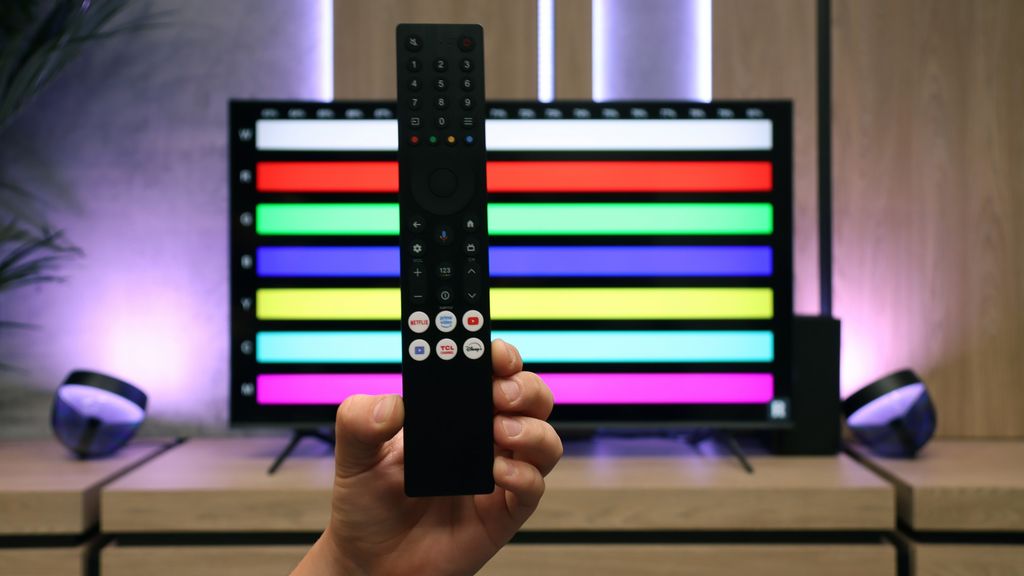
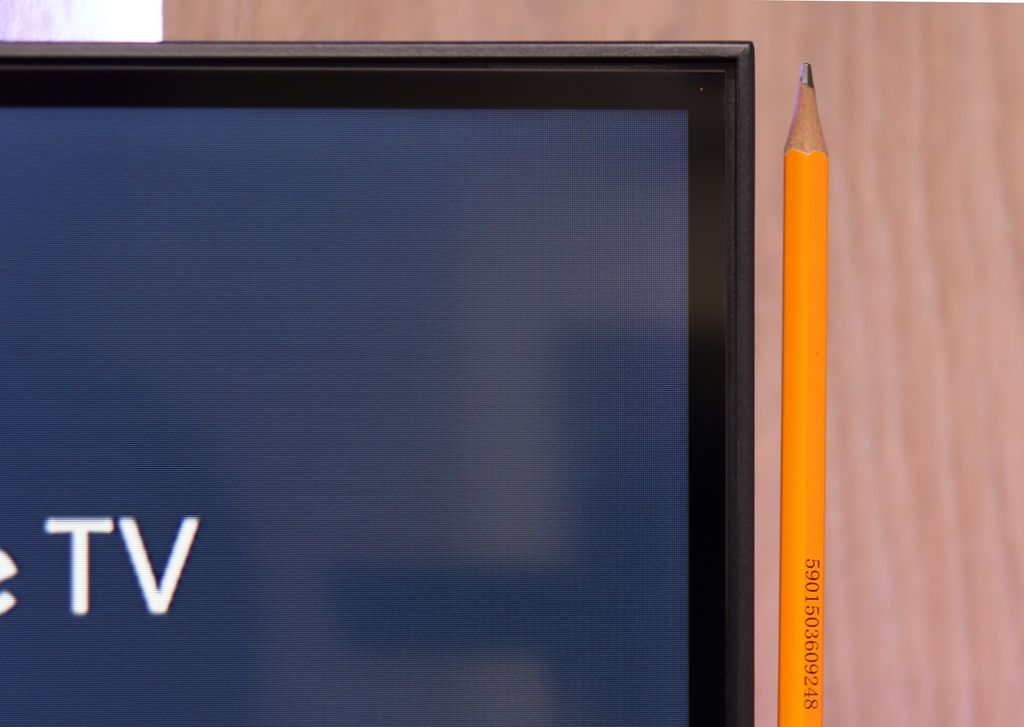

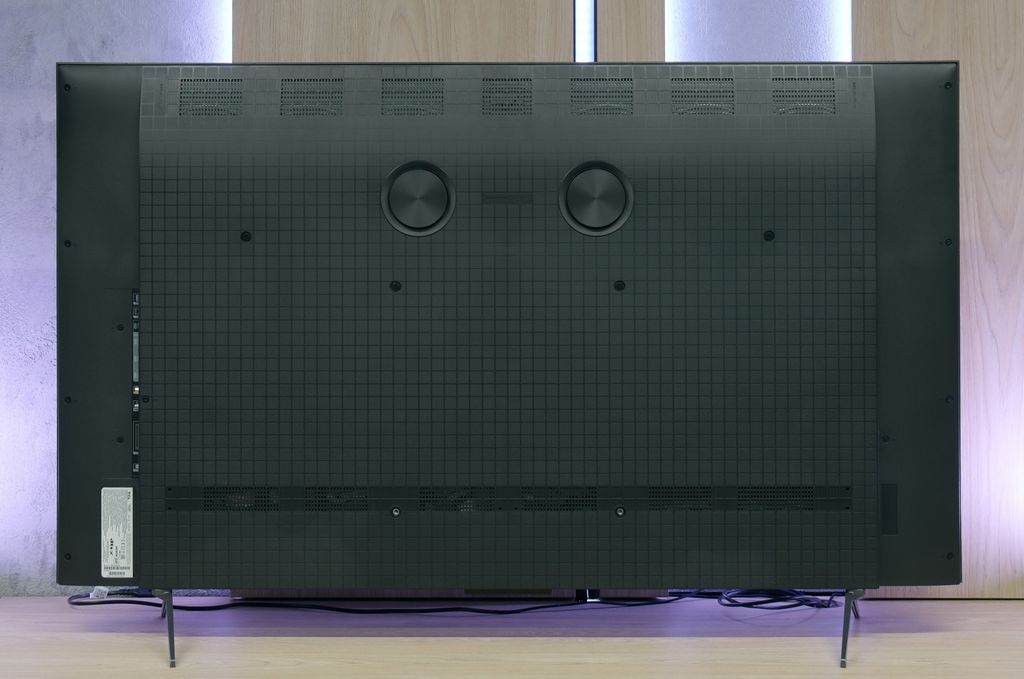
Contrast and black detail
10/10
7.5/10
Local dimming function: Yes, number of zones: 180 (10 x 18)
Contrast:

Result
∞:1

Result
∞:1

Result
∞:1

Result
∞:1

Result
∞:1

Result
129,650:1

Result
26,650:1

Result
12,900:1

Result
12,600:1

Result
6,250:1
Halo effect and black detail visibility:
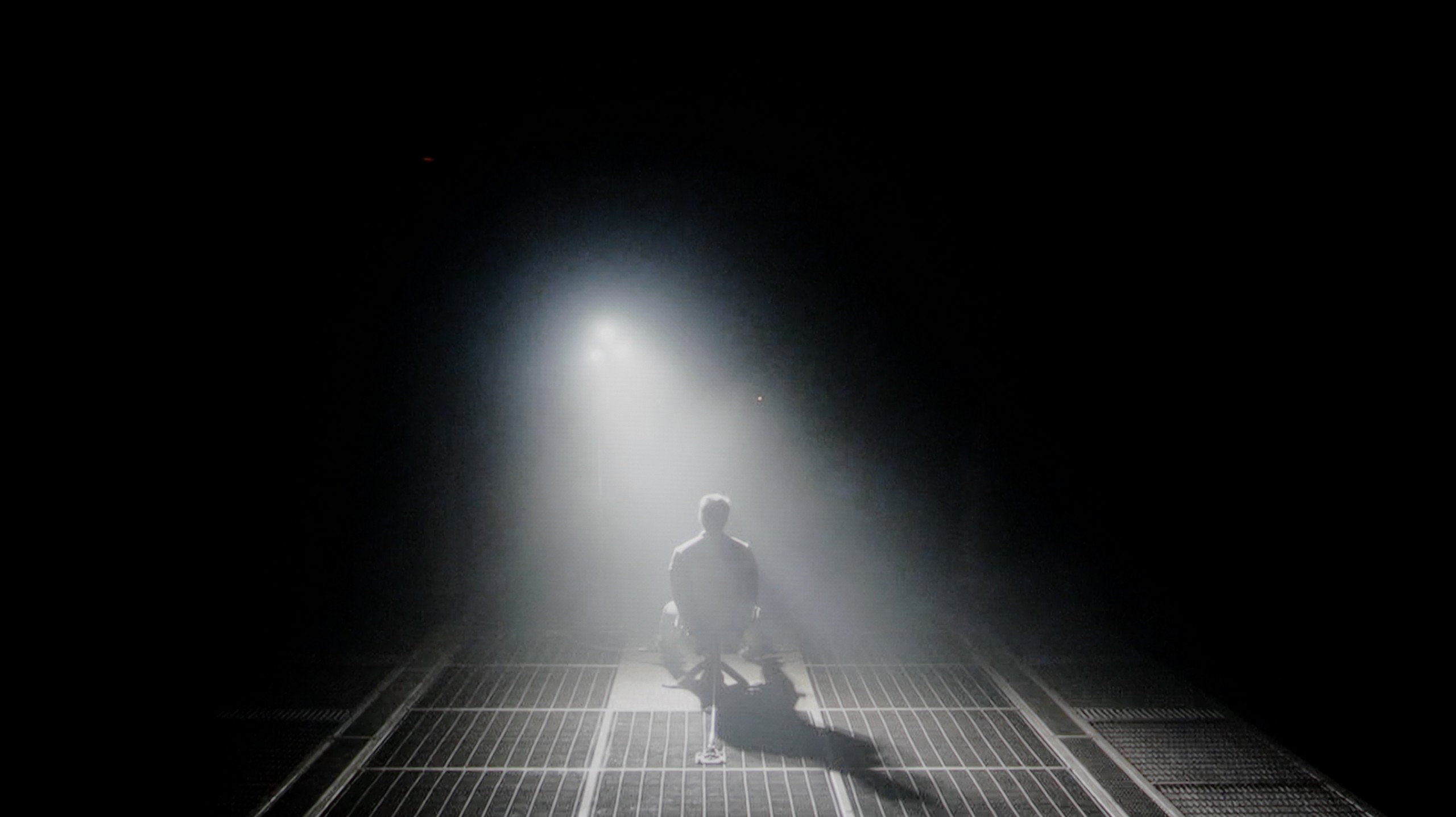
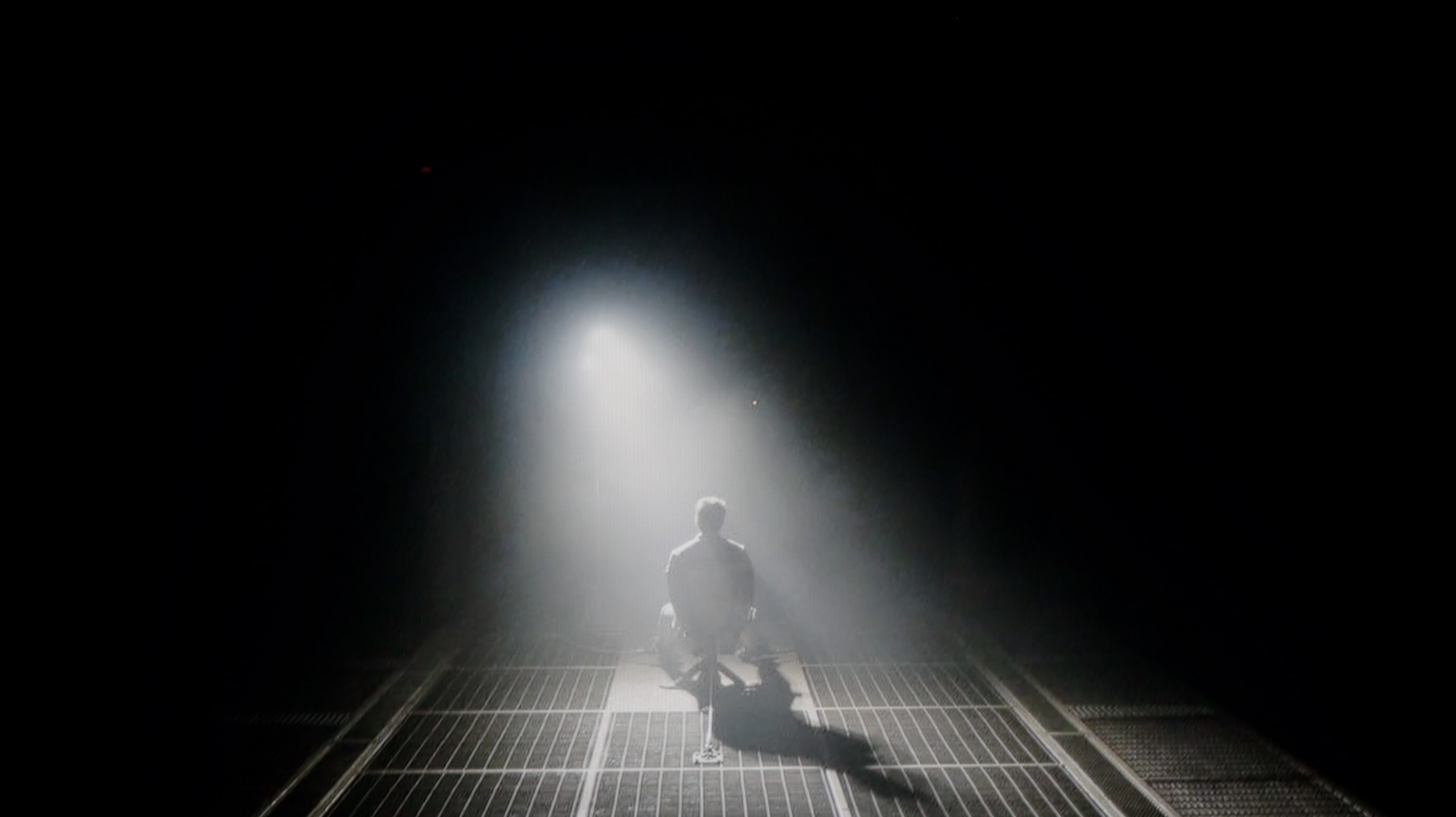
In terms of black levels and contrast, the S90F makes no difference whether we choose the version with a WOLED panel or QD-OLED. In both cases, the effect in typical cinema conditions remains the same, and we can always count on perfect black levels. This impresses not only when watching movies but also ordinary TV shows. For someone who has never experienced an organic panel, the first encounter with such a television can be truly stunning. It makes no difference whether we are watching less demanding scenes, like those from the movie Oblivion, or segments where only a few details remain on screen, such as stars in the sky in the film Star Wars – in every case, the image remains clear, and details are perfectly separated from the background. This is one of the biggest advantages of OLED, as each pixel is controlled independently and functions like a separate zone. This means there's no need to worry about compromises in the visibility of details in bright areas, which can disappear even in the best LCD TVs. It is in cinematic conditions that the S90F shows its full potential and can truly amaze. Here, OLED technology – including the QD-OLED panel – performs flawlessly and delivers an effect that is hard to fault.
Let's move on to what tigers like best, which is black and contrast. If you were worried that the lower price of the C6KS model (C69KS/Q6CS) was due to drastic cuts in image quality, I have great news for you regarding black levels and contrast. In direct comparison with the more expensive C6K, the tested model is almost on par with it. Just like in the higher series, we find here a VA panel supported by a local dimming system. What’s most interesting – and here’s a big surprise – during the tests we counted exactly the same number of dimming zones (in the same size) in the C6KS as in the more expensive counterpart! The black level is very good. The contrast measurement results speak for themselves – for such a relatively inexpensive television, the black is deep and free from major flaws that often plague budget models without local dimming. Of course, we can't defy physics. One must reckon that in very demanding scenes (e.g., bright text on a black background), we may sometimes notice undesirable effects, such as blooming (the halo effect around bright objects). However, this is not something that disqualifies this television – generally, the black level here is at a very decent, satisfying level.
HDR effect quality
7.8/10
4.9/10
Luminance measurements in HDR:

Result
1416 nit

Result
1585 nit

Result
1449 nit

Result
1379 nit

Result
808 nit

Result
602 nit

Result
204 nit

Result
421 nit

Result
152 nit

Result
590 nit
Scene from the movie “Pan” (about 2800 nits)


Scene from the movie “Billy Lynn” (about 1100 nits)


Static HDR10


Dynamic: HDR10+
Dynamic: Dolby Vision


HDR luminance chart:
TCL C6KS / C69KS / Q6CS
HDR luminance
Samsung OLED S90F (QD-OLED)
HDR luminance
The biggest difference between the 65-inch S90F and the other versions is brightness. The QD-OLED panel can reach up to 1700 nits in laboratory tests, which is over 500 nits more than the version with a WOLED matrix. This translates to a significantly stronger and more immersive HDR effect. In most scenes, the bright parts of the image look stunning, and we must admit that we were positively surprised, as we expected results closer to the WOLED version, but what we got is an effect that impresses even in films. As with every OLED, there are moments when the panel must reduce brightness a bit. This mainly concerns full-screen, very demanding scenes – for instance, in the last test scene from the movie “The Meg,” brightness drops to around 800 nits. However, it's hard to consider this a flaw because it's still an excellent result, unprecedented in OLED TVs in this price range. Everything suggests that the 65-inch S90F could be one of the best choices this year for those looking for a strong OLED at a reasonable price. Another advantage of the QD-OLED matrix in HDR content is its colour gamut coverage. Thanks to quantum dots, the television achieves nearly 100% of the DCI-P3 gamut and almost 90% of the BT.2020 gamut. These are values that place it alongside much more expensive models and make it exceptional in its class.
And what about HDR? Here the C6KS performs quite well and – as is becoming the theme of this review – just like in the C6K model. The maximum brightness generated by this television is around 600 nits. In bright scenes, this translates to a really solid, cinematic effect and generally, video materials look good here. However, it's important to keep in mind the specifics of the dimming algorithm in this model. When very small, bright points (e.g. stars) appear on a dark background, the television can quite significantly dim them. The goal is simple: to eliminate blooming and maintain the best possible black. It's a reasonable compromise. Most viewers will definitely appreciate deep, “true black” more than additional microscopic details, the display of which could cause the screen to appear greyed out. Such is the nature of local dimming technology in this price range, and one must be aware of this. It’s also worth noting that the TCL C69KS (C6KS) has an additional PFS coating, which is marketed under the QLED technology slogan. Thanks to this, the colours are saturated and vibrant – our measurements showed that the coverage of a wide colour gamut reaches as much as 92%.
Factory color reproduction
7/10
5/10


Factory Mode
After calibration
Samsung S90F, like most modern televisions, offers several picture modes, but in keeping with our tradition, we checked it in the most important one, which is Filmmaker. This setting makes the picture look much more natural than in the default, often oversaturated modes. It is neither overly vivid nor artificially dimmed – just closer to what you should actually see. However, this doesn’t mean it’s perfect. The S90F had noticeable shortcomings in white balance, particularly in the blue range, which created a slightly yellowish filter effect on most scenes. One might argue that it looks more “cinematic” because it’s warmer, but let’s not kid ourselves – George Lucas didn’t shoot Star Wars in sepia 😉 (you’ll find a comparison with a scene as always below). In HDR materials, there was also an issue with brightness management. The EOTF curve clearly showed that the television brightens the image more than it should, which led to some effects looking too intense and deviating from the reference. Fortunately, many of these flaws can be eliminated through professional calibration – we will discuss the effects of this procedure later in the test.
In contrast to the more expensive C6K model, in the tested C6KS we don't find an option in the menu labelled as Filmmaker Mode. Is this a reason to cry? Absolutely not. Our tests showed that in practice, in terms of colour reproduction, the lack of this specific label makes virtually no difference. The best available Film/Cinema mode here offers an almost identical picture profile to the aforementioned Filmmaker in the more expensive model. So we get a very similar image, just under a different name. Therefore, if you were wondering whether paying extra for the C6K would give you better colours – the answer is: no, in both cases the base is the same and requires slight adjustments.
Color reproduction after calibration
9.3/10
7.5/10




Calibration quickly revealed that the S90F has a significant reserve of capabilities. The image in SDR immediately gained a natural quality – classic films no longer looked like someone was applying a yellowish filter, and the colours regained their proper character. It's a return to the atmosphere of the original, without the impression that someone tried to "age" it forcefully. In HDR content, the difference was even more pronounced. The EOTF curve was managed to nearly reference level, and any deviations are so subtle that most viewers wouldn't even notice them. In practice, the S90F shows an image very close to ideal post-calibration. Compared to the WOLED version, it even performs better – mainly due to a wider coverage of the colour palette, which makes the colours look fuller and more vibrant.
Thanks to the white balance adjustment, the C69KS's tendency to distort colours has been effectively limited, leading to a very good final effect. After calibration, we will no longer see excessive warmth in SDR scenes or overly cool tones in HDR. However, it is worth noting the brightness characteristic. In SDR content, there are hardly any objections – the image looks very good, especially in older films, TV shows, or YouTube materials. Evaluating the television's performance in HDR is much more difficult. Analysis of the EOTF curve suggests correct behaviour, but its practical variant shows certain limitations. The C69KS can overly brighten the smallest elements of the frame, while at other times it can dim the entire scene. Calibration has therefore brought clear benefits in terms of colour, but certain limitations resulting from local dimming and the way it is controlled by the C69KS cannot be avoided, which we also observed in the C6K test.
Smoothness of tonal transitions
8.8/10
4.8/10












QD-OLED panels, thanks to their very wide colour gamut, simply have a greater number of colours, making it easier to seamlessly blend one shade into another. This was clearly evident in the S90F – compared to the classic version with the WOLED panel, we noticed a distinct improvement. Most transitions were smooth and practically invisible, and the image in most scenes felt exceptionally cohesive. In very bright sections, some minor imperfections can still be perceived, but they are cosmetic enough not to distract the viewer.
When looking solely at the fluidity of tonal transitions, the C69KS provides no real reasons for complaint. The gradation of colours is appropriate, and more challenging sequences do not reveal any significant issues. However, you may be surprised by the low rating in this category. This is due to very strong dithering and artificially boosted "resolution," which lead to a grainy and unnatural character of the image. For this reason, the final rating is significantly lower, despite the correct gradation of the tonal transitions themselves.
Image scaling and smoothness of tonal transitions
7.5/10
5/10
Smooth transition function


Image without overscan on the SD signal


S90F performs really well here, although there are some points that are common across most Samsung TVs. The noise reduction feature can effectively smooth out unwanted colour transitions in lower-quality materials like television or YouTube, making them look simply better. However, it should be noted that it works quite aggressively and can also soften elements that we wouldn’t want to alter, such as facial details. Therefore, if we want to use it, it’s best to use it in the "medium" setting and be aware of the compromise it brings. The upscaling itself is of a high standard – low-quality materials are pulled towards an image resembling 4K. The only caveat is that the S90F can still have issues with so-called overscan, meaning slight trimming of the edges in very low-quality materials such as 576p and lower.
The C69KS handles upscaling quite well. The tested 576p content looks surprisingly decent – a considerable amount of detail is preserved, and the algorithm adds a subtle ‘rounding’ effect to sharp edges, making the image appear more cohesive. However, it doesn't perform as well when it comes to smoothing tonal transitions. The television practically cannot improve them, leaving the image in a rather raw state. With older materials, this can be simply exhausting, as the lack of additional processing highlights all imperfections.
Blur and motion smoothness
8.5/10
4.9/10
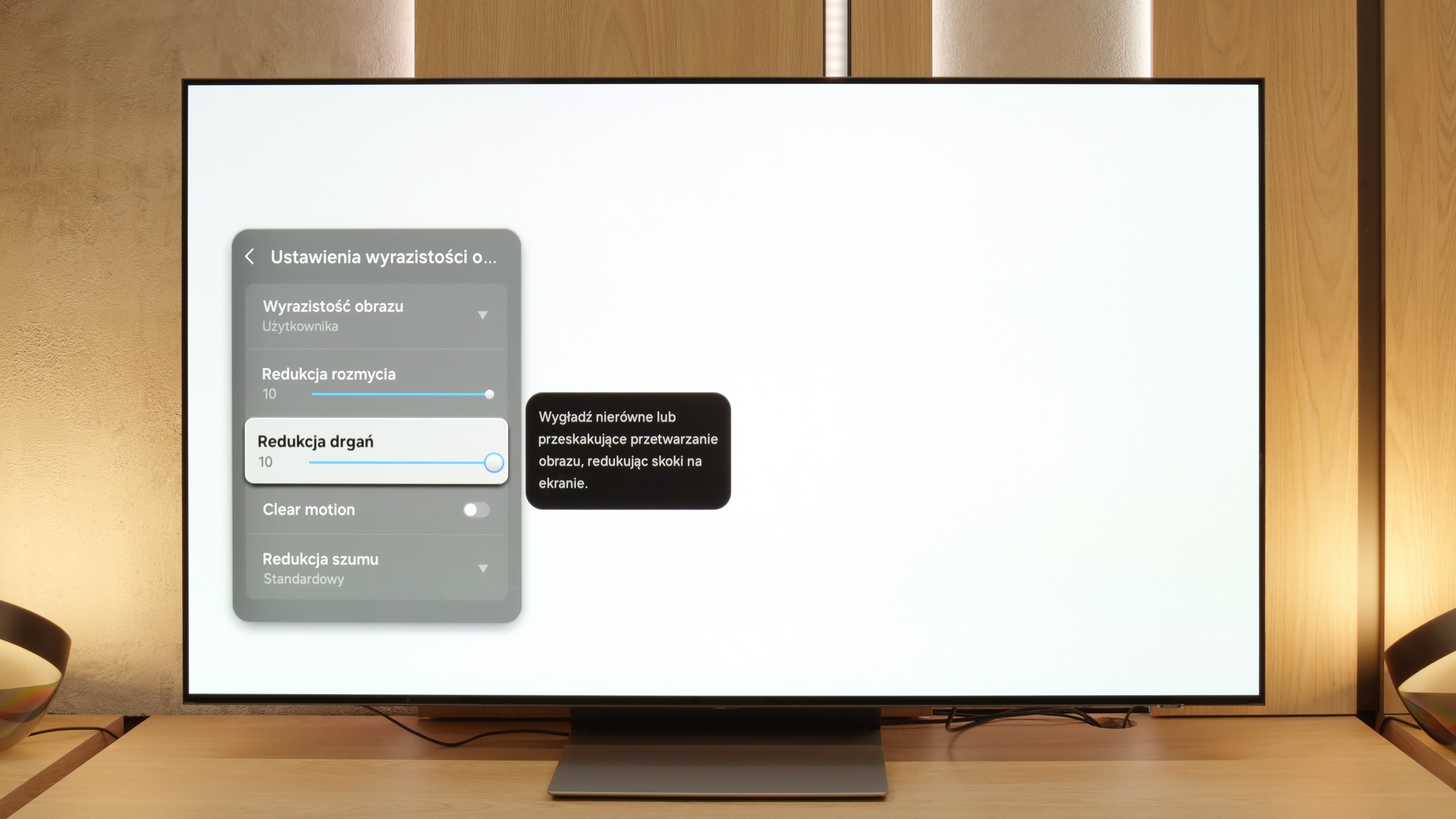
Blur (native resolution, maximum refresh rate):






Blur (BFI function enabled):
Image flickers in this mode



Blur (4K@144Hz):



Blur (4K@144Hz):

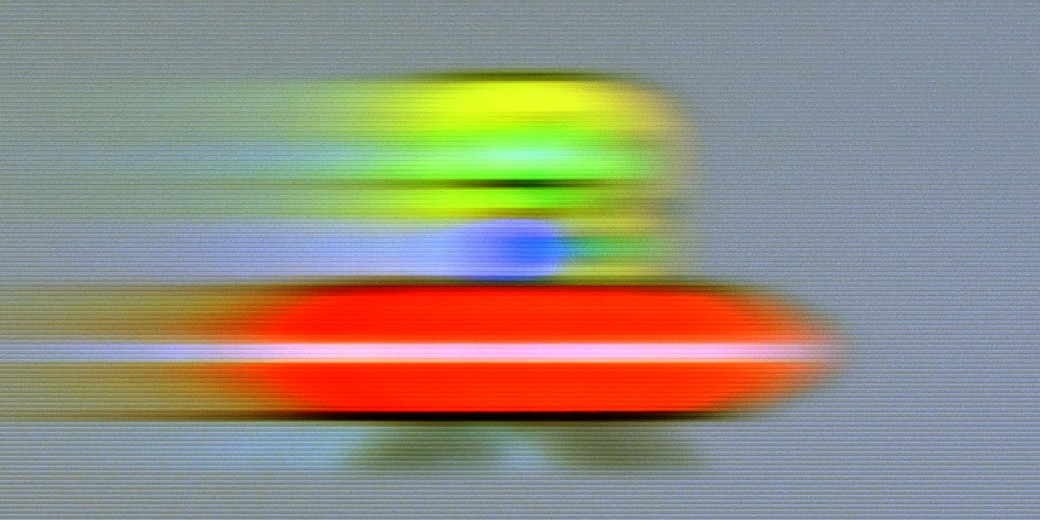
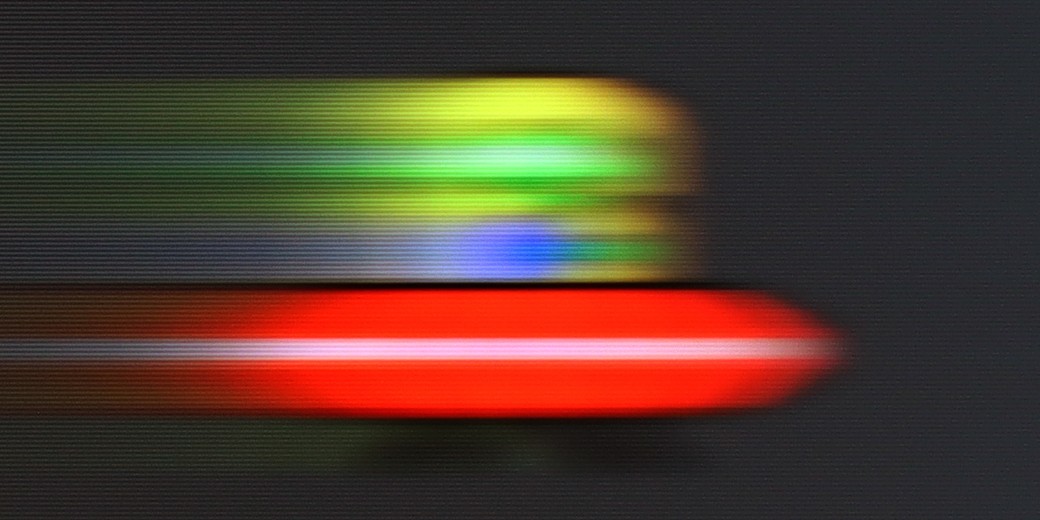
S90F is an OLED with a refresh rate of 144 Hz, but in practice, what matters most is how it performs at 120 Hz, as this frequency is the most important when watching sports. The QD-OLED panel is no different in this regard from WOLED panels – the pixel response is nearly instantaneous, so motion is rendered with surgical precision. The effect is easy to predict. The image is practically free of motion blur, making gaming on consoles, matches, or other sports broadcasts a tremendous pleasure on the S90F.
Fans of movies and series have not been forgotten either. Like every Samsung television with a refresh rate of 120 Hz and above, the S90F is equipped with a proprietary motion smoother called “Picture Clarity.” Here, we find two sliders – blur reduction and judder reduction – which allow you to improve the smoothness of content recorded at 24 frames and tailor the effect to your own preferences.
C69KS offers a simplified motion enhancement panel in movies, allowing users to adjust the intensity of the effect using a slider. This makes it easy to tailor the smoothness to personal preferences. It also deserves credit for the ability to utilise higher refresh rates – even though the panel operates natively in 4K at 60 Hz, by lowering the resolution to 1440p, modes of 120 and 144 Hz can be enabled, on both consoles and PC. This sounds like great news, however, in practice, the image at these settings trails exceptionally badly. The effect is so pronounced that the overall experience simply appears mediocre and loses its appeal in everyday use.
Console compatibility and gaming features
9.6/10
8/10
- ALLM
- VRR
- VRR range48 - 144Hz48 - 144Hz
- Dolby Vision Game Mode
- Correct implementation of HGIG
- 1080p@120Hz
- 1440p@120Hz
- 4K@120Hz
- Game bar


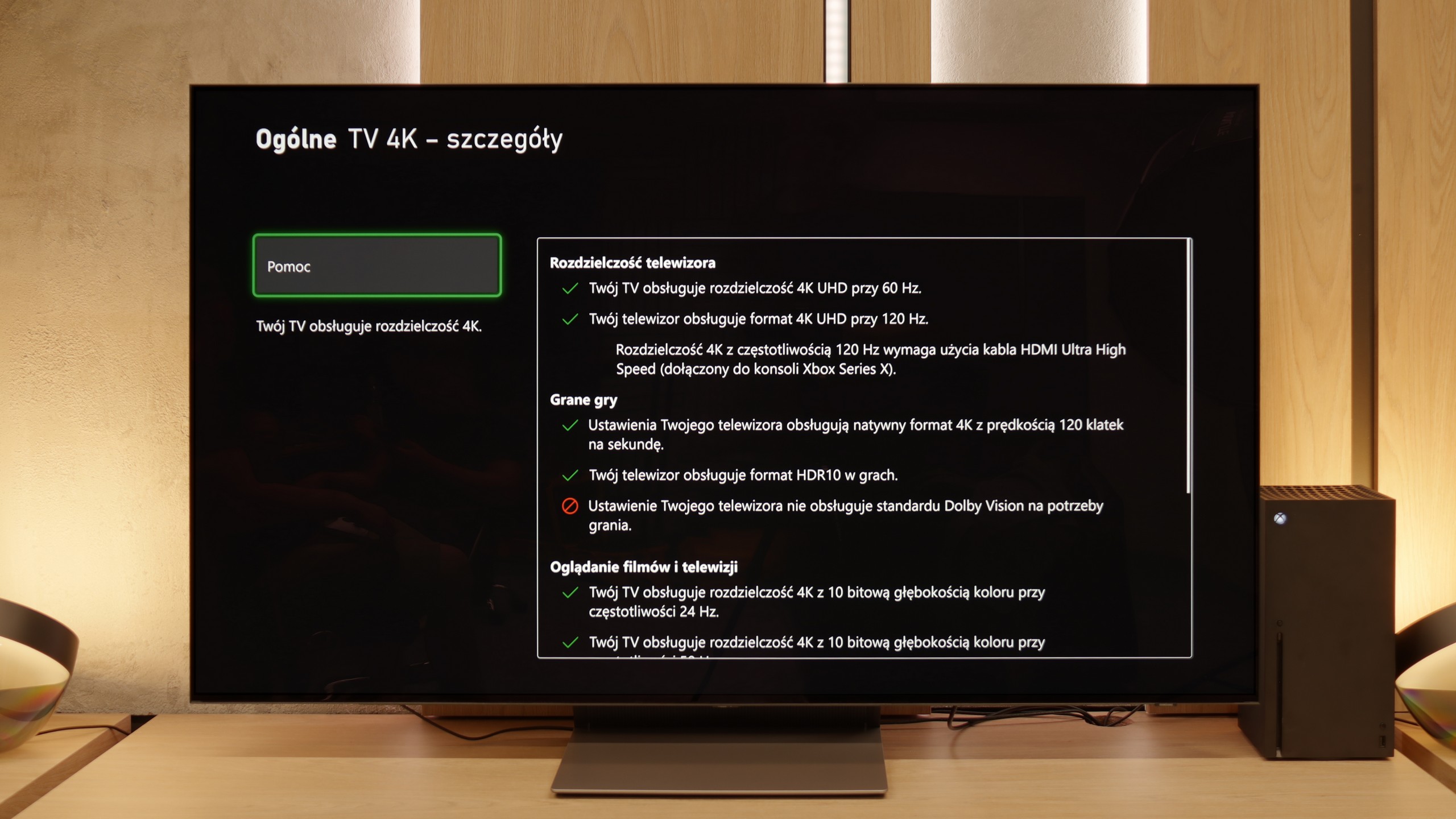
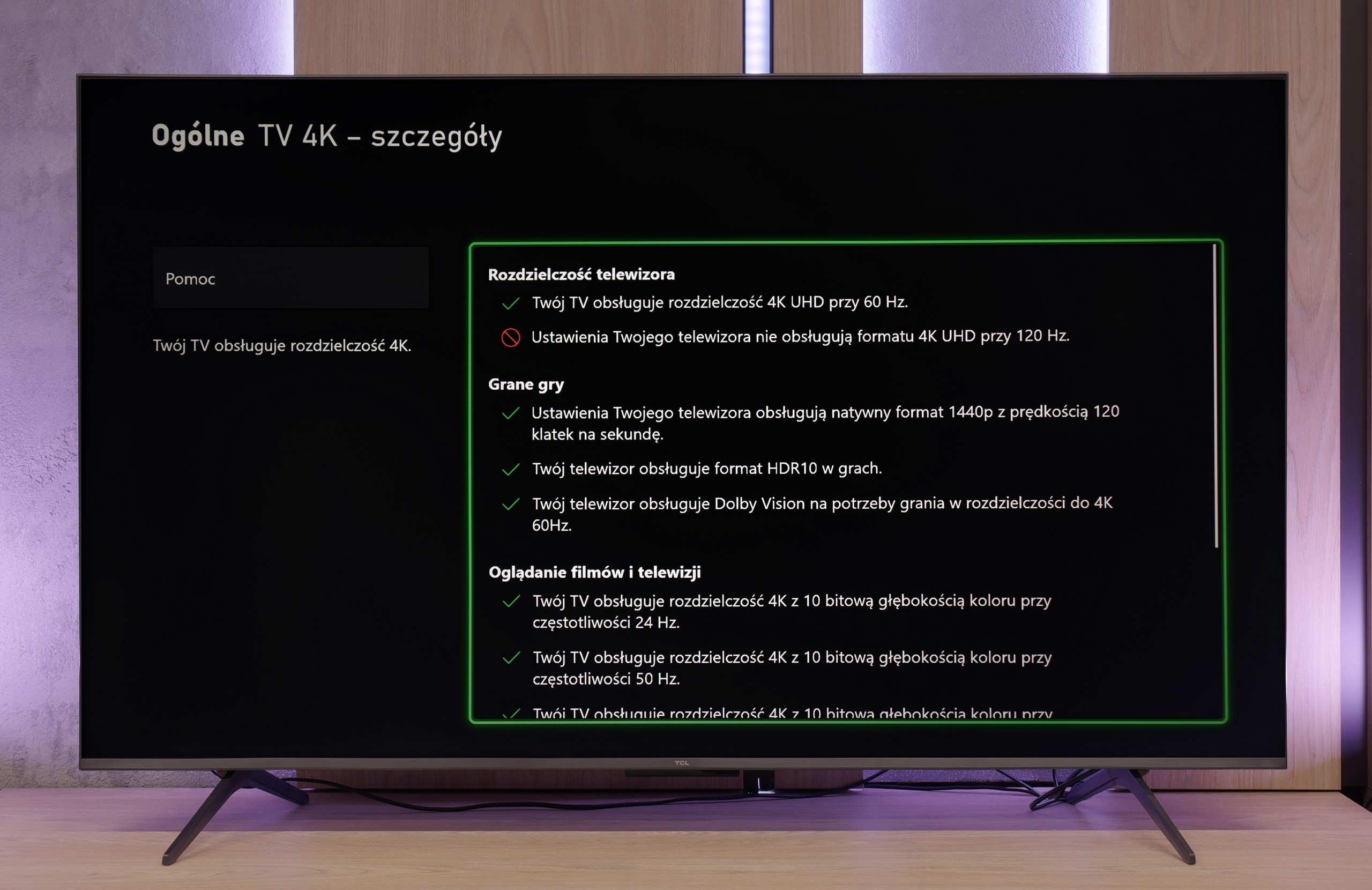


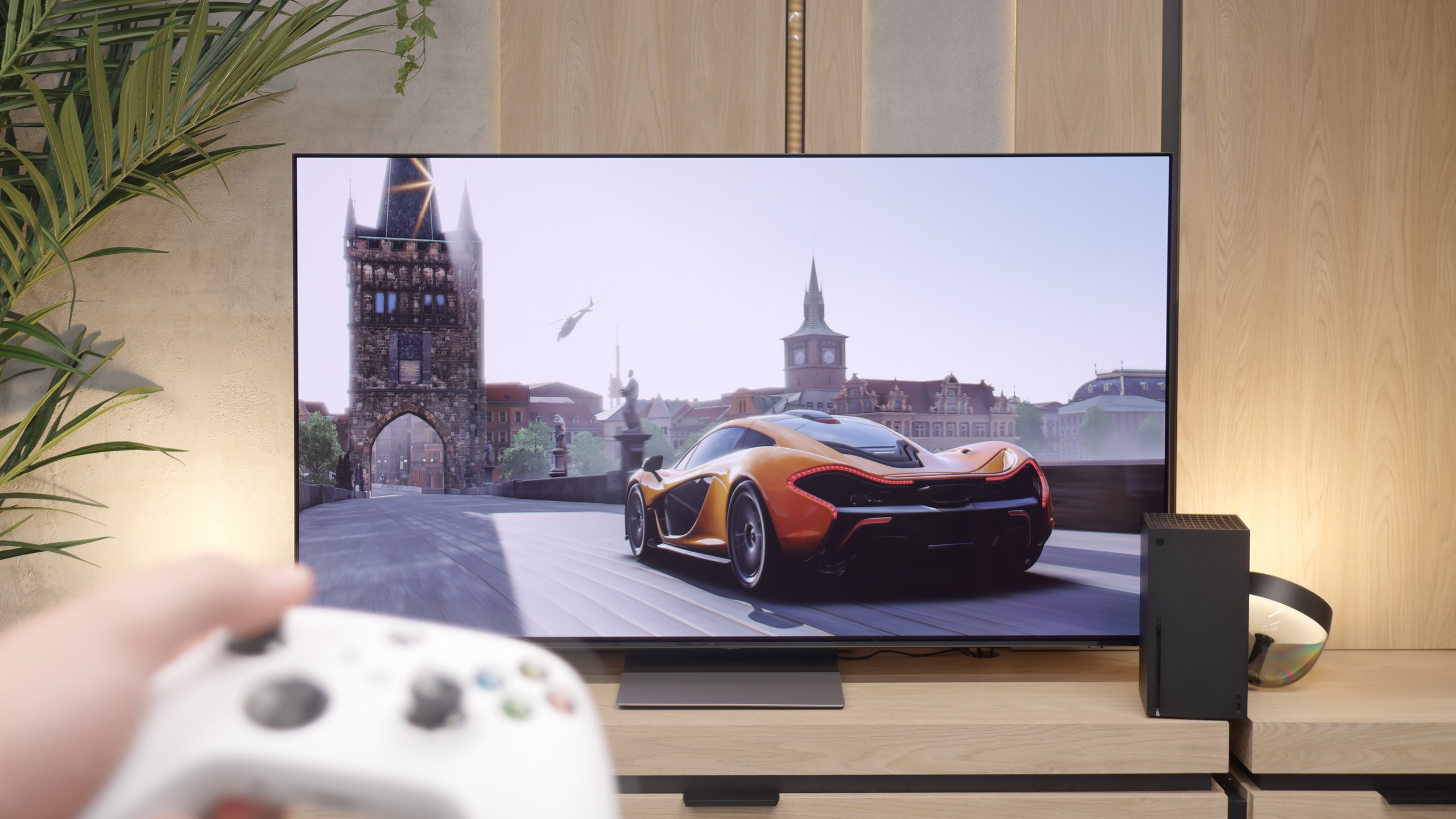

The S90F is a television that genuinely brings a lot of joy when gaming. To start with, we get four proper HDMI 2.1 ports, which means you can connect all consoles and PCs without having to figure out which device takes priority. This is a convenient and practical solution, which is not at all a given with other manufacturers. Additionally, there are key features such as: automatic game mode (ALLM), which automatically switches the screen to low latency settings, and VRR frame synchronization that operates over a wide range from 48 to 144 Hz. This ensures the picture remains smooth, whether we're playing fast-paced online shooters or more relaxed narrative titles. The Game Bar also deserves attention – a panel that allows quick access to several handy extras. For example, you can turn on an extra crosshair in the middle of the screen, enlarge the minimap, or, in the case of PC, change the aspect ratio. Finally, there's also Samsung's unique Game Motion Plus mode. Its task is to smooth out older or poorly optimized titles, and it actually works quite well. With this mode, even less polished games can look better and provide more enjoyment than on other televisions that theoretically offer the same technical parameters.
If we overlook the smudging and lack of native 4K at 120 Hz, the C69KS is impressive in how well it performs for gaming. You get everything you would expect from a gaming TV: Variable Refresh Rate (VRR), Auto Low Latency Mode (ALLM), Dolby Vision Gaming mode, and a consistently functioning HGiG. The TV can also operate at 120 or even 144 Hz at lower resolutions, making gameplay on console or PC smoother. Additionally, there's a clear Game Bar that allows you to quickly check key settings while gaming. As a result — despite a few limitations — the C69KS can be a genuinely successful screen for gamers.
Input lag
10/10
10/10
SDR
HDR
Dolby Vision
In terms of delay, the S90F performs exceptionally well. With content at 120 Hz, it’s around 5 ms, and at 60 Hz, it’s about 10 ms. In practice, this means an immediate response to the gamepad, mouse, or keyboard – without the feeling that anything is slowing down the gameplay!
TCL C6KS performs very well here — the latency drops below 10 ms, which means responses in games are instantaneous. This is an excellent result in this class and definitely good news for those playing dynamic titles.
Compatibility with PC
8.6/10
1.7/10
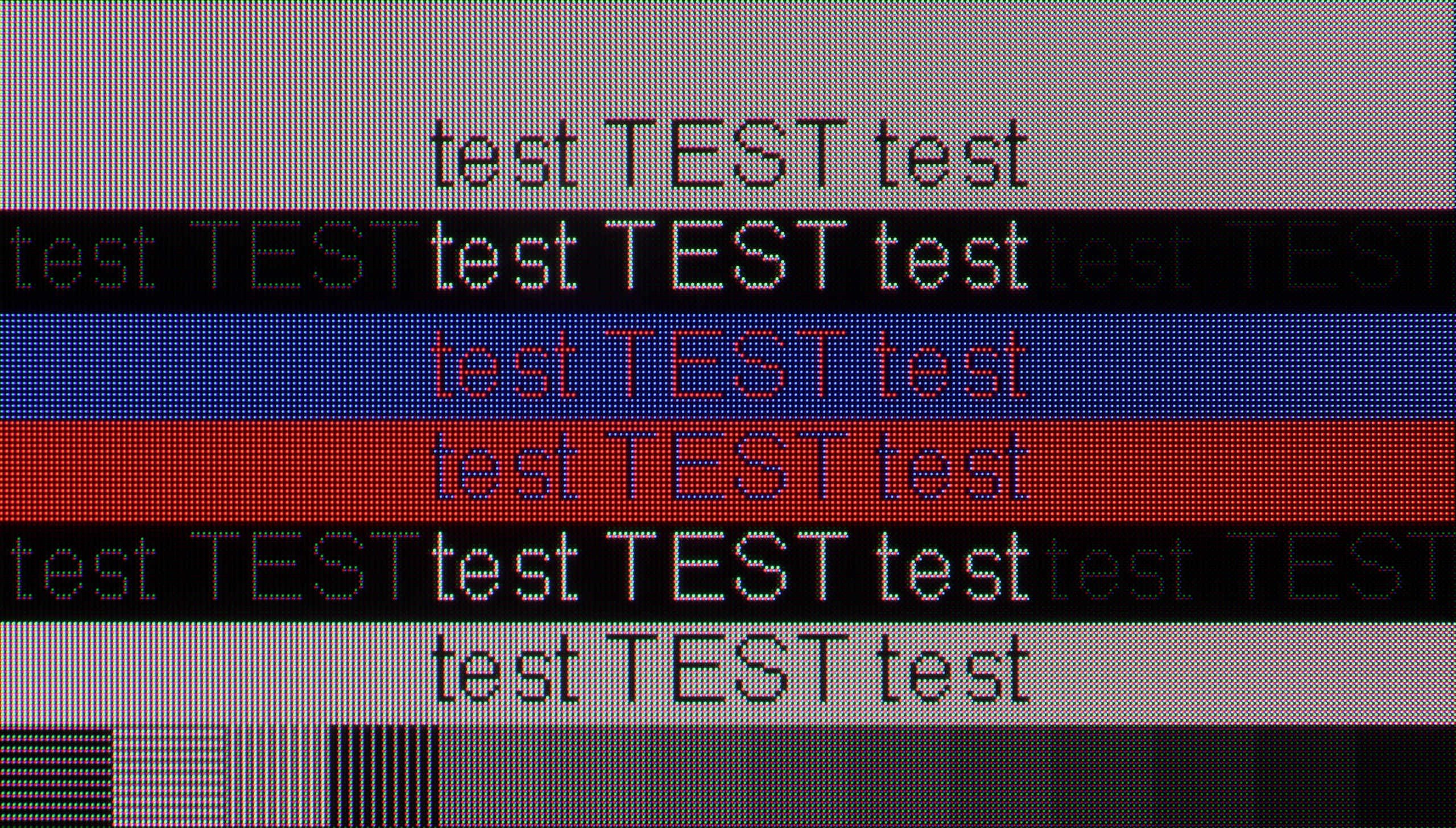
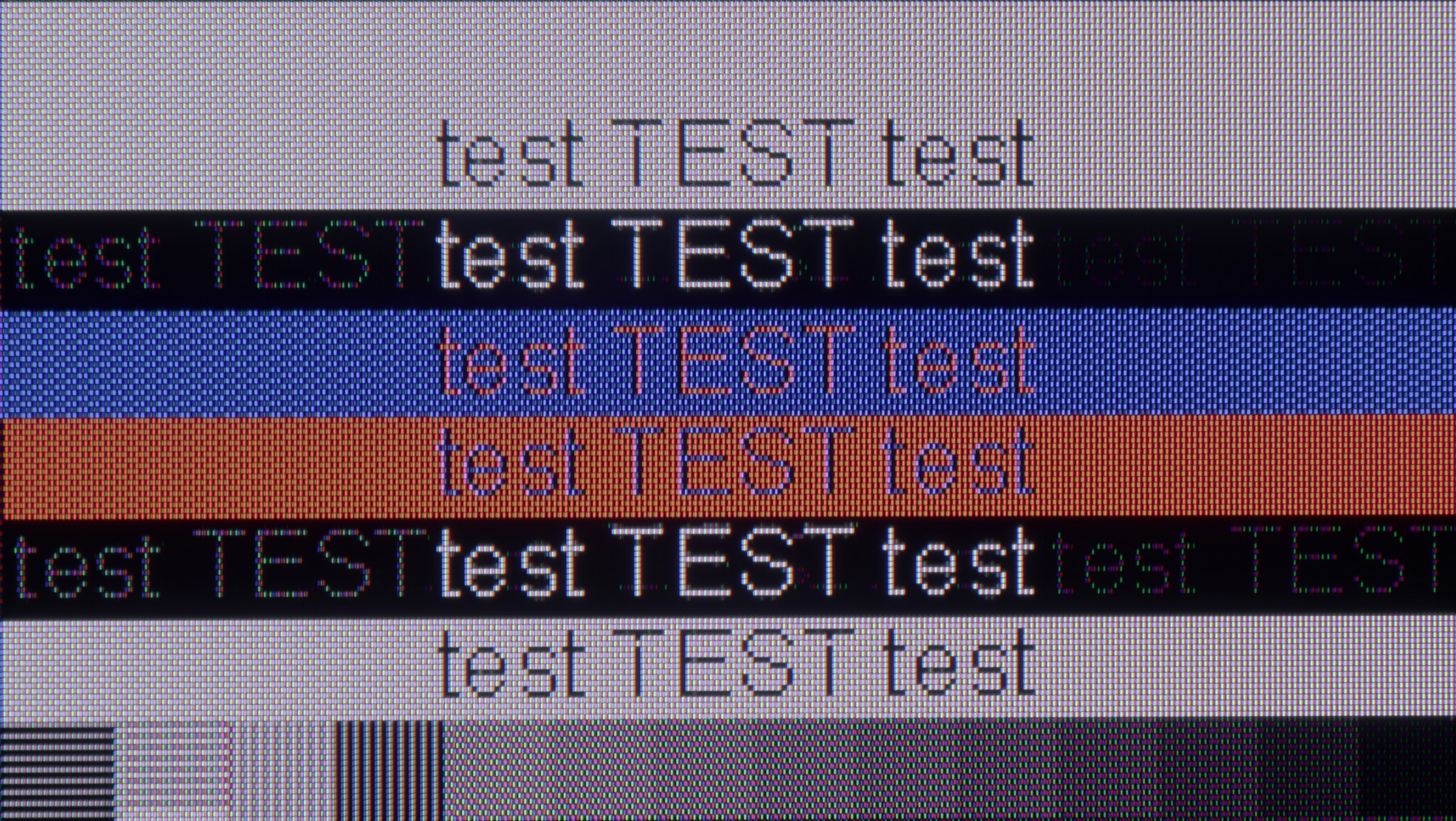
S90F, even in the 65-inch variant, performs excellently as a large PC monitor. The most user-friendly features are, of course, for gamers – the television supports refresh rates of up to 144 Hz, as well as frame synchronisation with Nvidia (G-SYNC) and AMD (FreeSync) graphics cards. The difference compared to WOLED panels lies in the characteristic 'diamond' pixel arrangement in QD-OLED. In practice, this may affect the display of fine text – some letters at the edges may have slightly jagged shapes. On the other hand, in WOLED matrices with a four subpixel arrangement, text can be less precise, so each variant has its specific nuances. In both cases, however, the television is very well suited for both gaming and occasional computer work.
Aside from the previously mentioned ability to work at 144 Hz at lower resolutions, the C6KS offers nothing that would encourage its use as a monitor. The fonts look really poor — the darkest ones have a distinct, rainbow halo, and the standard text is surrounded by strange artifacts. The effect is noticeable enough that prolonged work at the computer can be simply tiring.
Viewing angles
9.8/10
2.7/10
One of the things that immediately impresses in the S90F is its viewing angles. This is the huge advantage of QD-OLED matrices – even if we're not sitting directly in front of the television, the image hardly changes. Colours remain vibrant, contrast is strong, and details are just as clear as when we're looking from a central position. So you can comfortably watch a film with several people, spreading out across the living room, without worrying that someone will get a washed-out version of the image. OLEDs have always performed well in this category, and this is one of their main advantages over classic LCDs. However, with QD-OLED, the difference is even more noticeable – the image holds its quality even at a steep angle, where on WOLED panels you can already notice a slight loss of colour intensity. Here, that's practically non-existent.
The viewing angles in the C6KS are very poor, typical of VA panels. It’s a compromise we pay for by choosing high contrast — head-on, the image looks good, but any significant deviation quickly causes drops in brightness and saturation.
Daytime performance
5.7/10
6.6/10
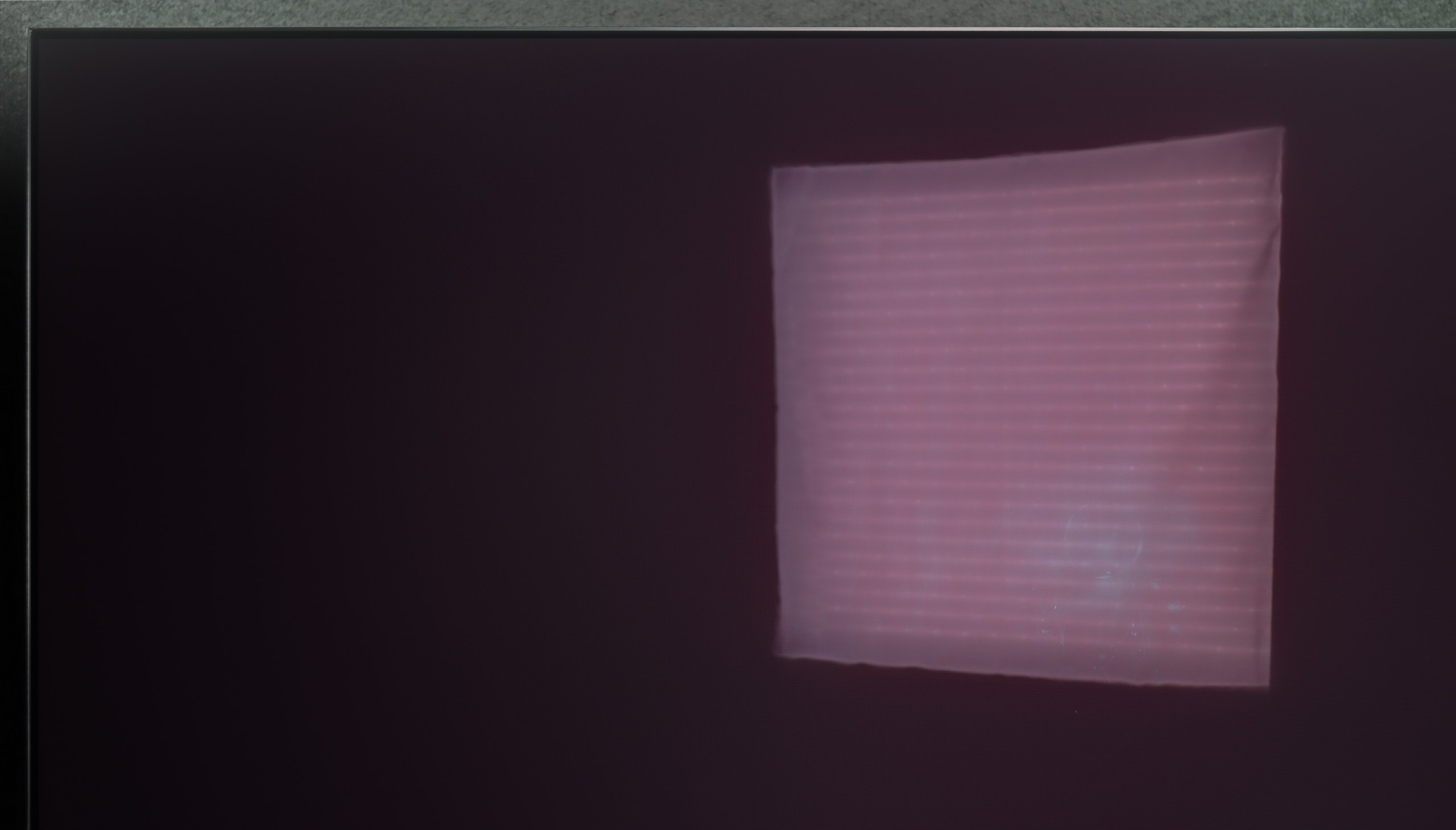
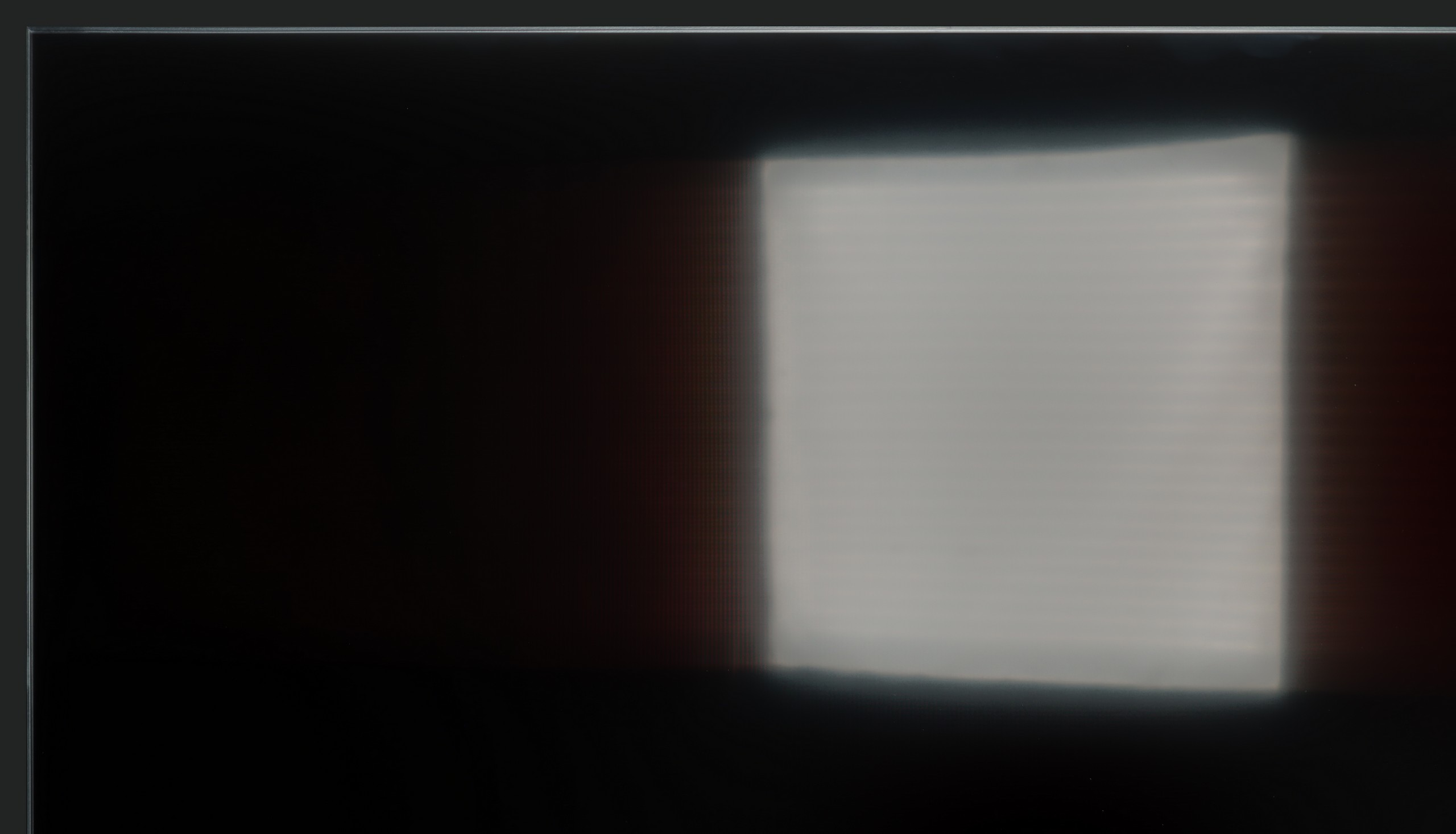
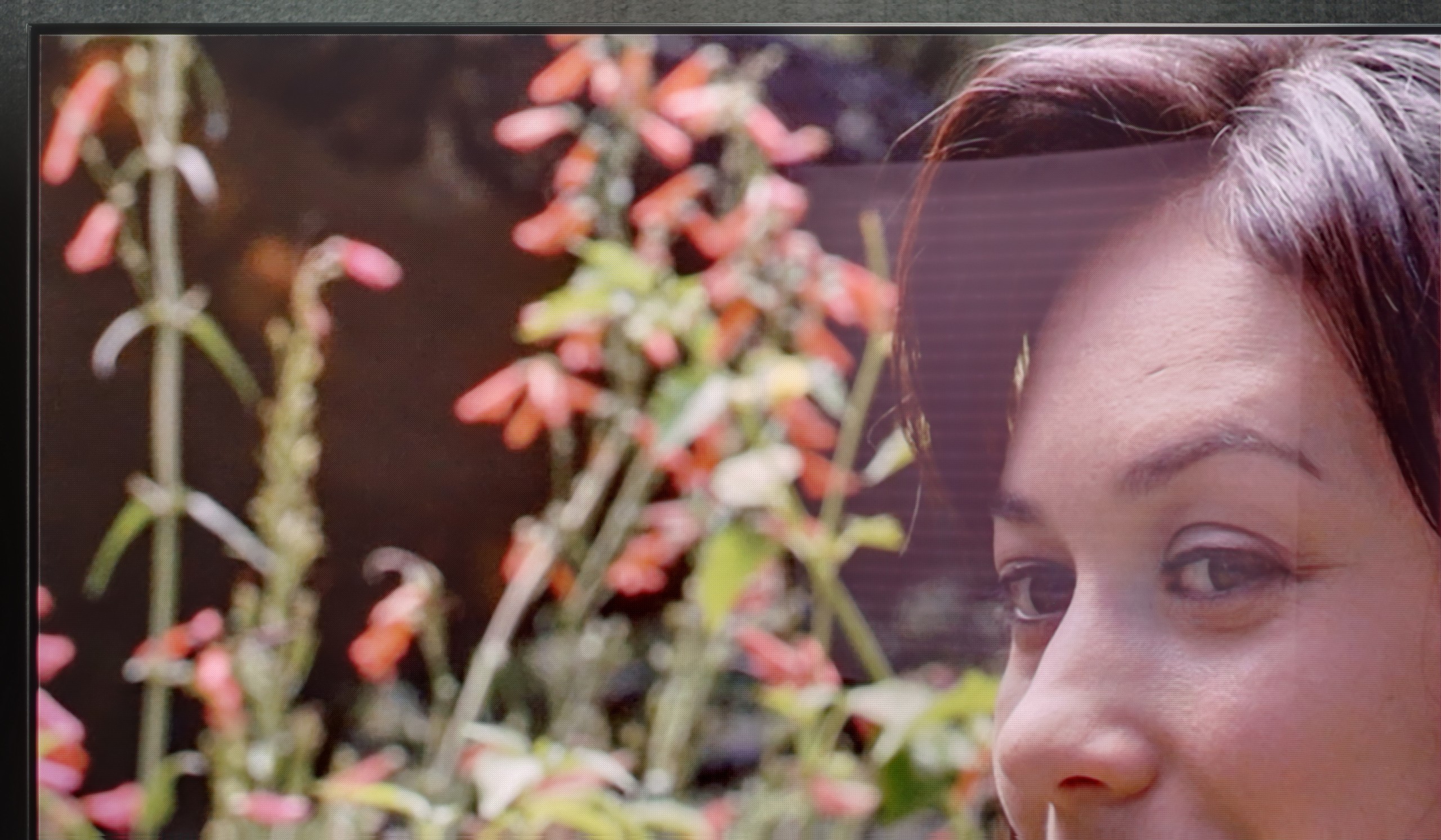

Panel brightness
Average luminance SDR
TCL C6KS / C69KS / Q6CS: 527 cd/m2
Samsung OLED S90F (QD-OLED): 431 cd/m2
QD-OLED displays have their Achilles' heel – it's the reproduction of black in brightly lit rooms. The glossy coating used here handles reflections really well, definitely better than in the WOLED panels we had the opportunity to test. The problem is that in very intense daylight, blacks can take on a dark navy hue and lose their depth. Fortunately, in the evenings this phenomenon disappears completely and the television shows an image that we expect from an OLED – with perfect contrast and true blacks. As for the brightness itself, the S90F performs quite well for a mid-range OLED. In typical conditions, it will handle without any issues, and the screen will look attractive even in a well-lit lounge. Only in really extreme conditions, when the sun is shining directly on the screen, can it be more difficult, but this is a common issue for all OLEDs in this price segment. On the other hand, better reflection suppression means that for many people, QD-OLED will prove more convenient for everyday viewing than classic WOLEDs, even though blacks don’t always look perfect on it.
The C6KS performs really well as a TV screen for daytime viewing. Its brightness of around 500–600 nits easily cuts through challenging lighting conditions. Additionally, it features a satin finish that effectively reduces reflections. As a result, the TV impresses during daytime viewing, even in brighter rooms.
Panel details
Subpixel Structure:
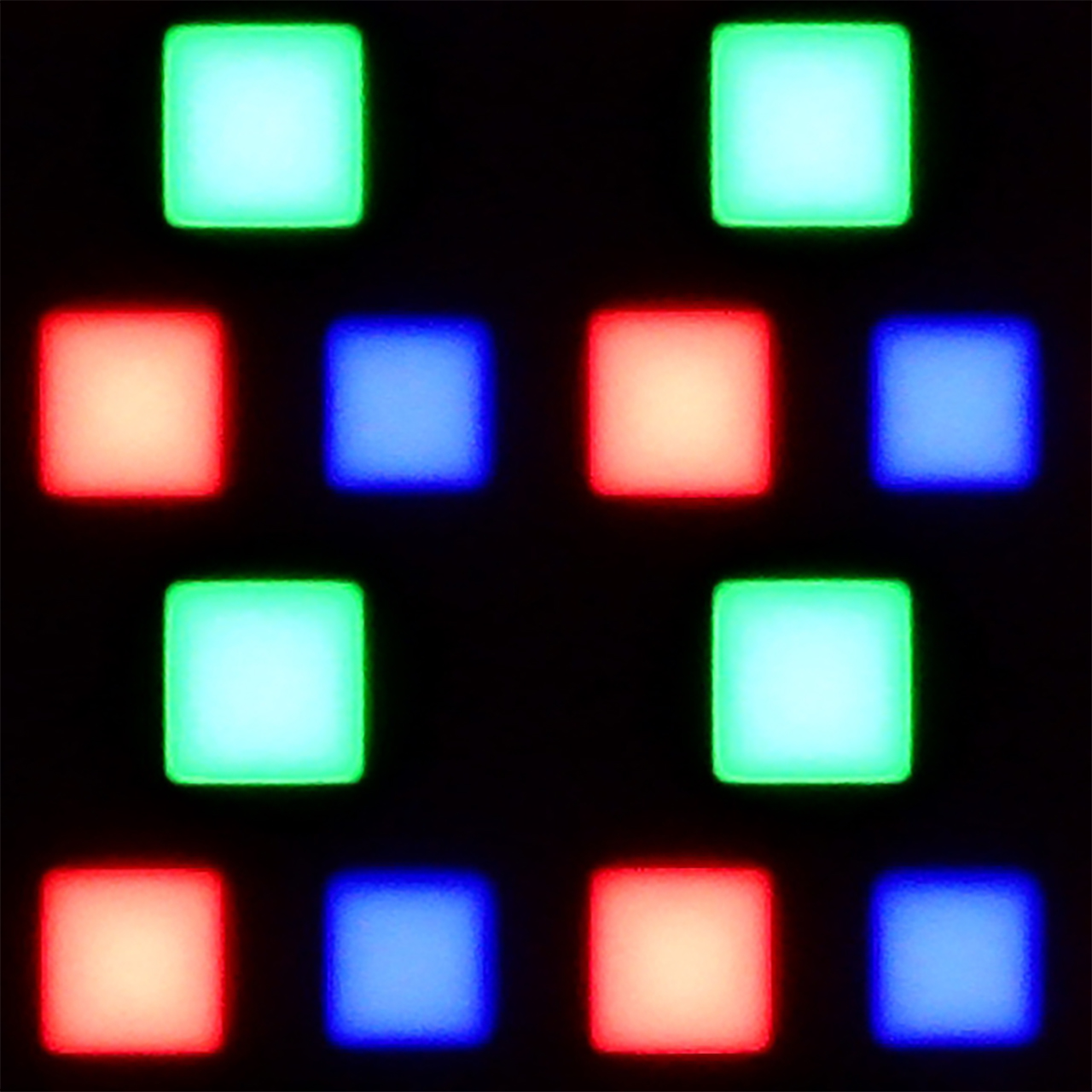
Panel uniformity and thermal imaging:

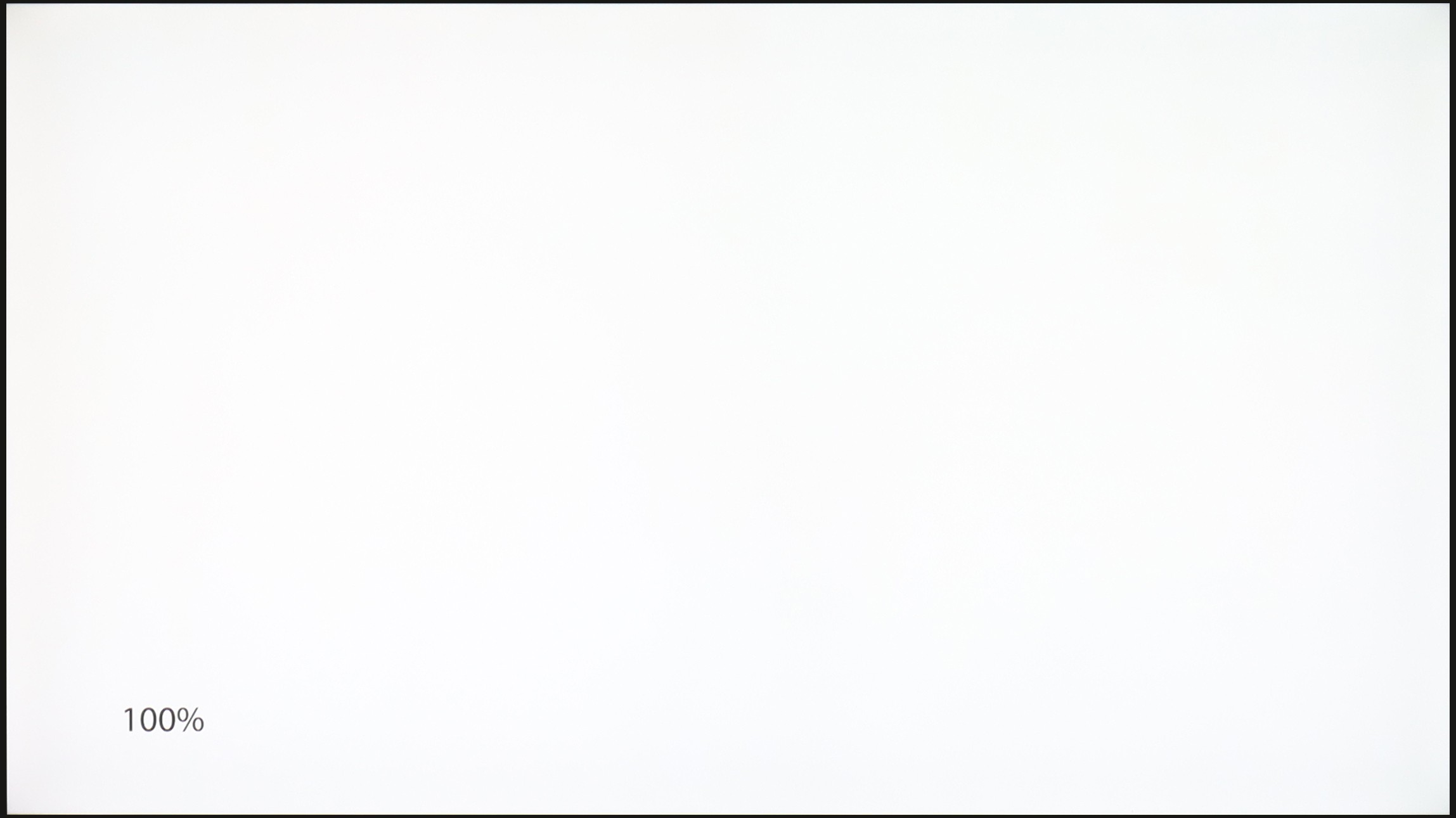
Samsung OLED S90F (QD-OLED)
TCL C6KS / C69KS / Q6CS
TV features
7.7/10
7/10
- HDMI inputs0 x HDMI 2.0, 4 x HDMI 2.1 48Gbps3 x HDMI 2.0, 0 x HDMI 2.1
- Other inputsToslink (Optical audio), IR (remote)
- OutputsToslink (Optical audio), eARC (HDMI), ARC (HDMI)Toslink (Optical audio), eARC (HDMI), ARC (HDMI)
- Network InterfacesWi-Fi 2.4GHz, Wi-Fi 5GHz, Ethernet (LAN) 100MbpsWi-Fi 2.4GHz, Wi-Fi 5GHz, Ethernet (LAN) 100Mbps
- TV receptionDVB-T, DVB-T2, DVB-S, DVB-S2, DVB-CDVB-T, DVB-T2, DVB-S, DVB-S2, DVB-C
Classic features:
- Recording to USB (terrestrial TV)
- Recording programming
- Picture in Picture (PiP)
- RF remote control (no need to aim at the screen)
- Backlit remote control
- Teletext
- Audio only mode
- Bluetooth headphones support
- Simultaneous Bluetooth headphones & TV audio
Smart features:
- AirPlay
- Screen mirroring (Windows Miracast)
- Voice search
- Voice search in native language
- Ability to connect a keyboard and mouse


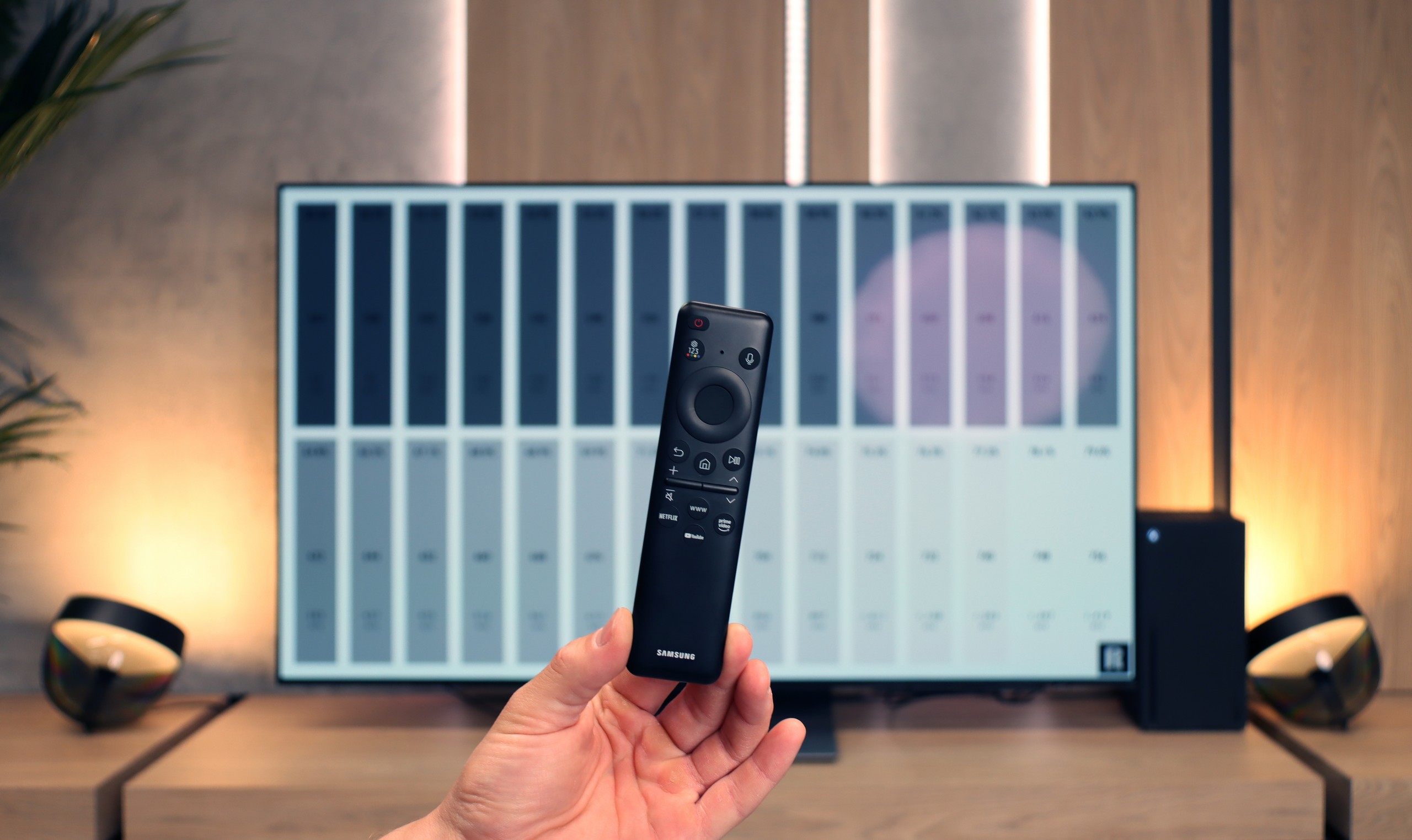
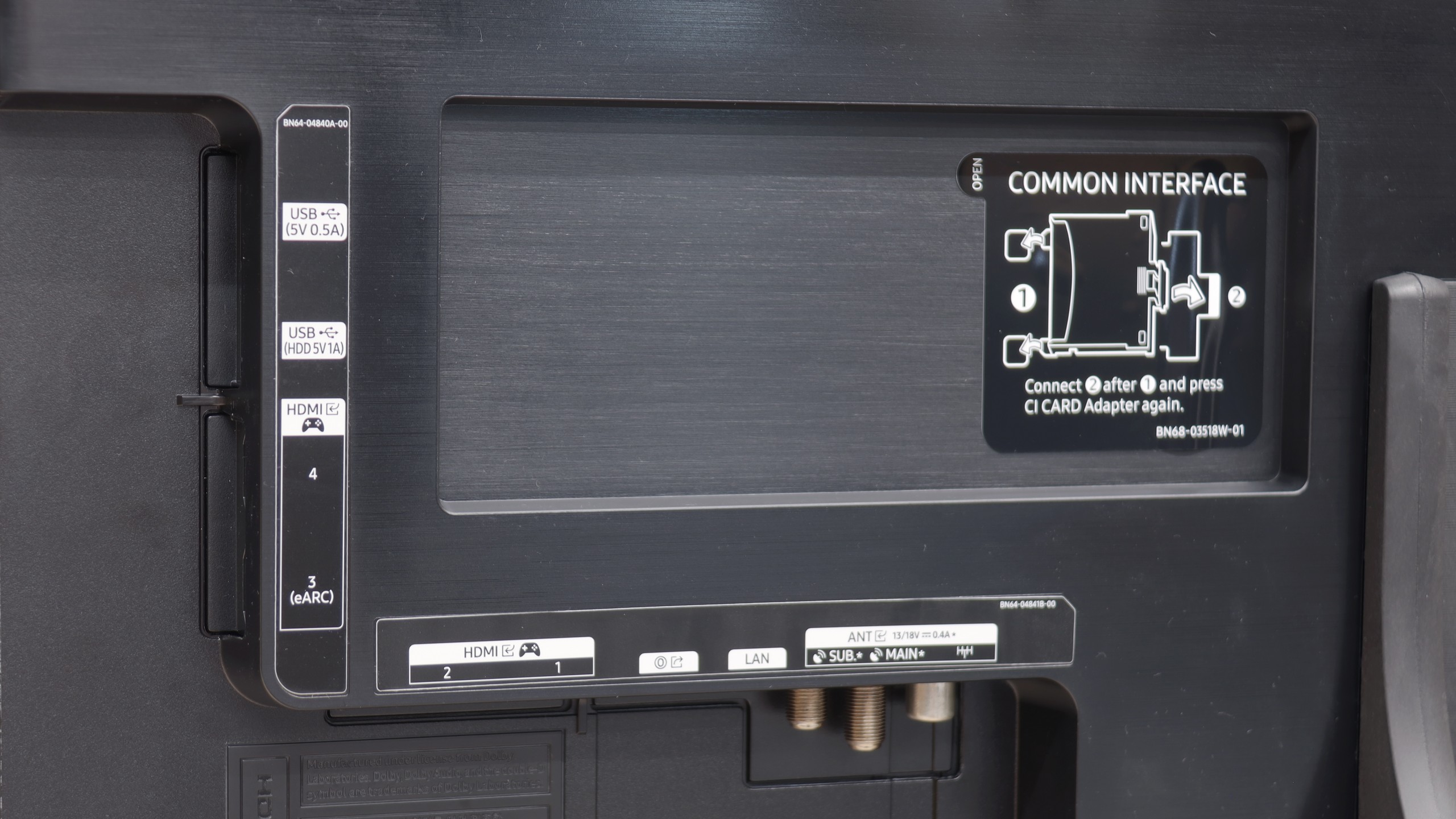

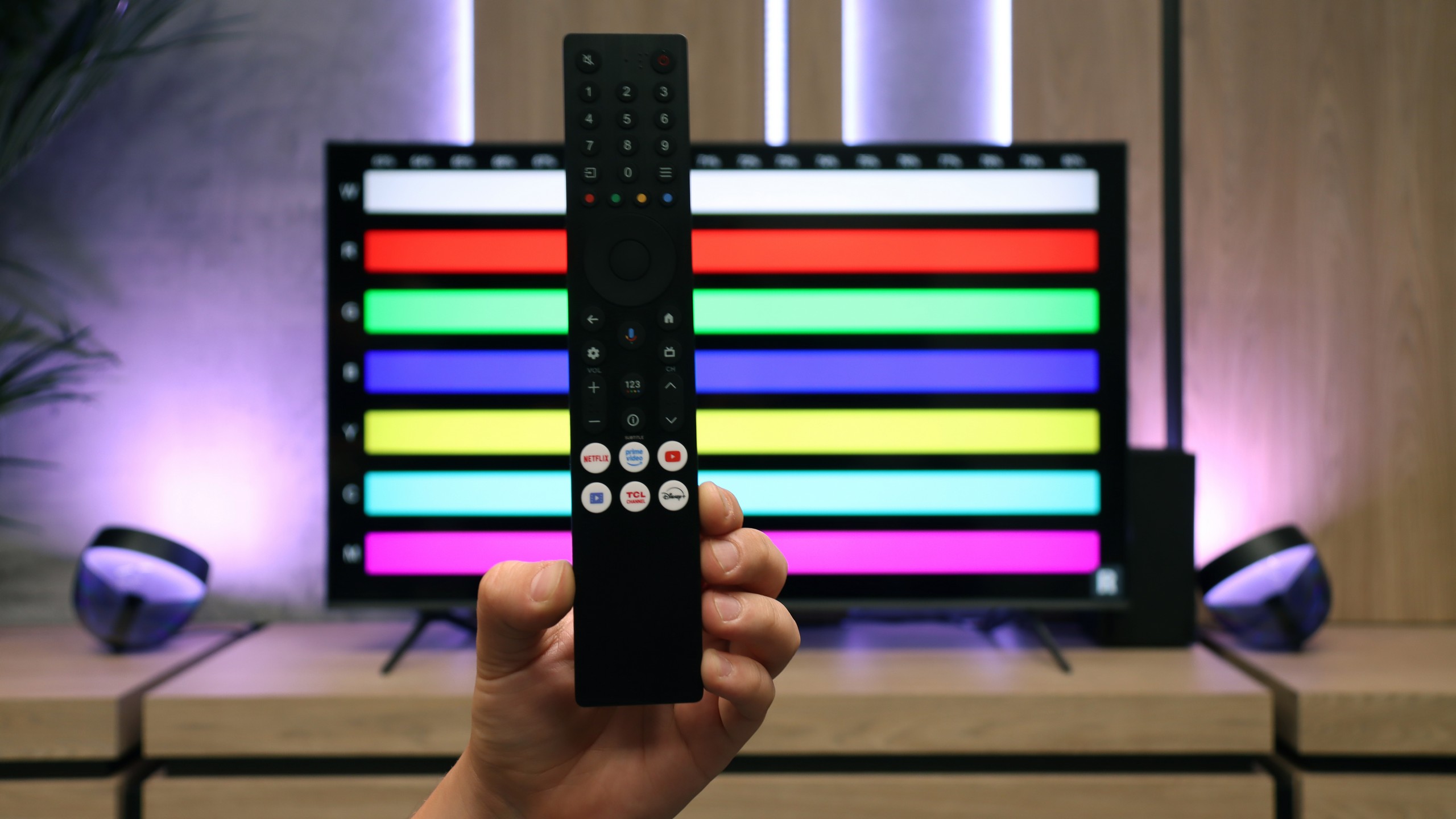
SmartTV Features: Tizen.
A major advantage of the S90F in everyday use is the Tizen operating system. It is one of the fastest systems on the market and has been exceptionally efficient on Samsung televisions for years, and on higher-end models like this one, it responds almost instantaneously. The menu reacts without delays, switching between applications is smooth, and the whole experience is intuitive enough that even someone encountering a Smart TV for the first time will find their way around it. In the app store, we can find practically everything we need – from Netflix to HBO Max and even less obvious services. While it may not have GoogleTV, there is really no sense of missing anything. A big plus is the integration with SmartThings. This is a solution for those who like to have their entire home controlled from one app. The television can be part of the IoT device ecosystem and will seamlessly communicate with the washing machine, air conditioning, or lighting if everything is on the same network.
Classic Functional Features
When it comes to classic features, it has everything one might expect: support for HDMI 2.1, USB inputs, optical output, and connectivity via Wi-Fi and Bluetooth. The only thing that more conservative cinema fans might find lacking is support for DTS:X audio formats – especially if someone watches films on physical media. The remote control may initially seem a bit strange, as it lacks traditional number buttons. But this is already standard in today's television world, and most users get used to it very quickly. A plus is that it works entirely wirelessly. The point is that you don't need to aim at the screen; simply pressing a button on the remote from anywhere (even in another room) will make the television respond to our actions.
The biggest advantage of the C6KS is the Google TV system. It's an environment that offers a lot — ideal for those who value a wide selection of apps and convenient use of streaming services. AirPlay, screen sharing functionality, and the voice assistant work very well here, making daily use of the television simply convenient.
The support for traditional television is somewhat lacking. Users who are counting on extensive "TV" features may feel overlooked. Besides the smoothly functioning Bluetooth remote with a numeric keypad, we won't find conveniences like USB recording or PiP functionality here.
Playing files from USB
9.1/10
8.9/10
Supported photo formats:
Maximum photo resolution:
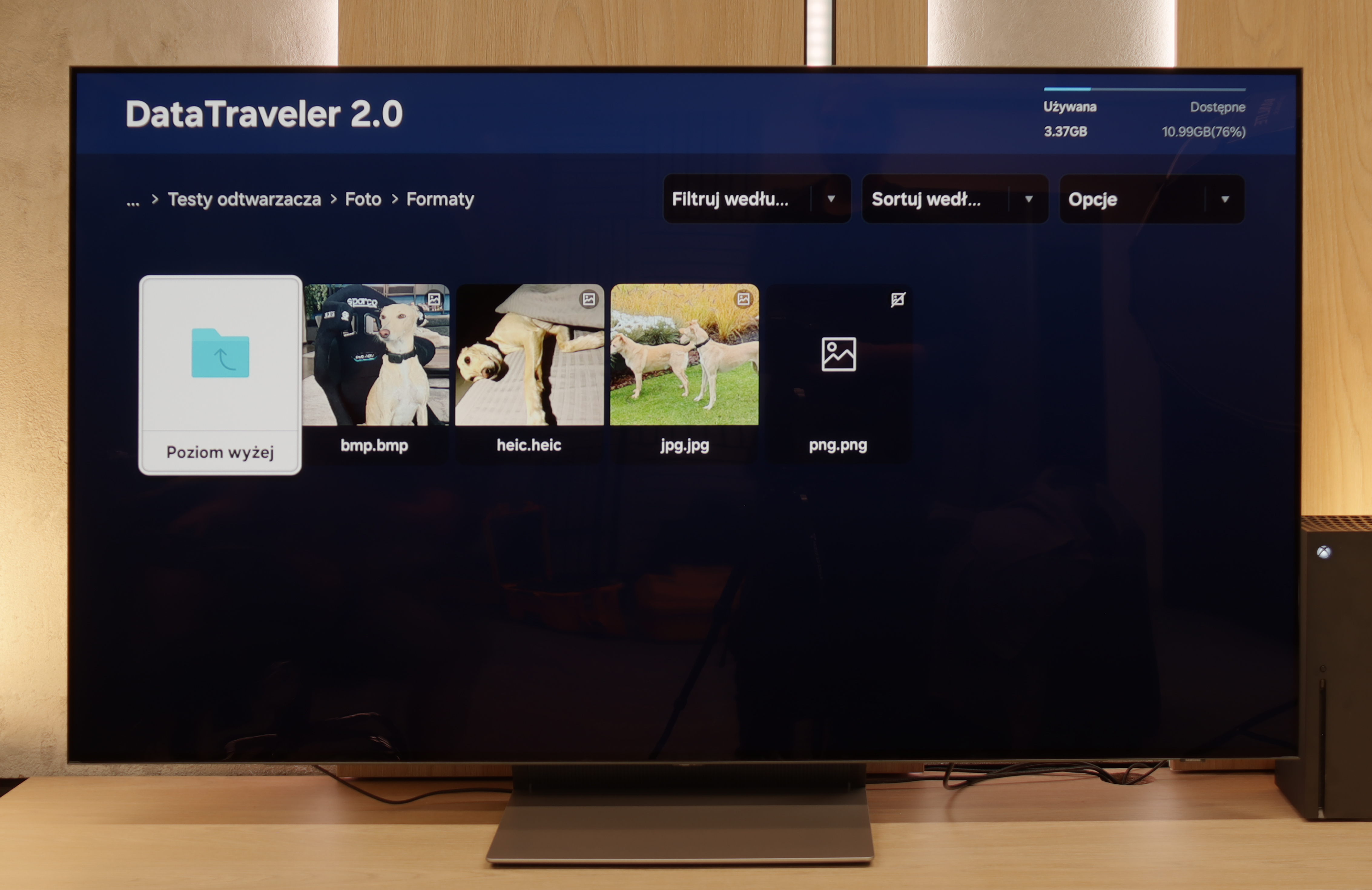
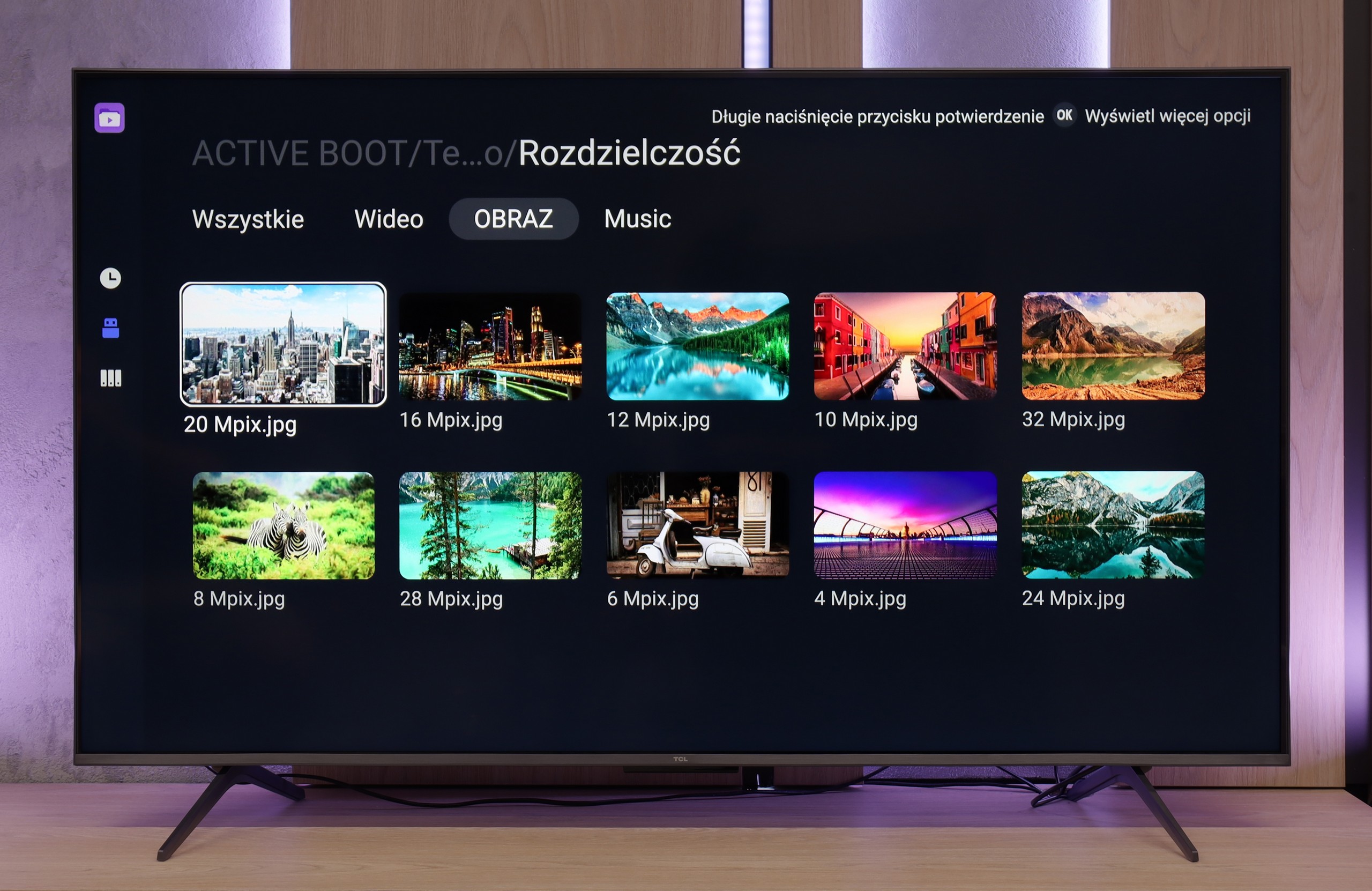
The built-in player in the S90F works really well and is more than sufficient for most users. It easily opens movies or music loaded onto a USB drive or portable hard drive and handles most popular formats. The only "more serious" issue we encountered was the lack of support for HEIC photos – the ones that can be saved by an iPhone. (Although we suspect that 90% of people use the JPEG format anyway).
The system player really does a great job and smoothly handles popular formats. The only hiccup appears with files from the Apple ecosystem (e.g., HEIC) – here TCL just gives up. Fortunately, a huge plus of Google TV is that you can install your own app, e.g., VLC. This way, you can quickly patch up the shortcomings of the factory player and play practically any material, customizing the TV to your needs.
Apps
8.7/10
9.6/10














































Sound
7.4/10
6.5/10
- Maximum volume84dB-
- Dolby Digital Plus 7.1
- Dolby True HD 7.1
- Dolby Atmos in Dolby Digital Plus (JOC)
- Dolby Atmos in Dolby True HD
- DTS:X in DTS-HD MA
- DTS-HD Master Audio
The S90F really plays nicely for a TV – the bass is noticeable, the dialogues sound clear, and the overall dynamic is quite good. Dolby Atmos also does its job well, as it can give the sound some space, making the movie experience better than with most basic built-in setups in other TVs. However, it must be said plainly: no TV, even one of this class, can replace a separate sound system. If someone truly wants to feel like they're in a cinema, the best solution would be to buy a soundbar or a full audio set. Especially since, as is typical with Samsung, there's a lack of support for DTS:X – so fans of Blu-ray discs and high-quality soundtracks will still need to reach for external equipment connected directly to the source.
The TCL C6KS performs almost identically to the C6K model, as it uses the same speaker set branded by Onkyo. For a TV of this class, the sound is quite good — you can even feel a slightly defined bass, which is not common in the budget segments. However, it's worth keeping the proper perspective in mind. This bass is decent compared to other TVs, but a home theatre system or even a basic soundbar will offer a much fuller, more dynamic sound. The C6KS will therefore be suitable for regular TV viewing, but if someone is after a stronger sound, additional audio equipment will be the natural choice.
Sound Quality Test
No sound test video
Acoustic Measurements
84dBC (Max)
75dBC
No acoustic data
